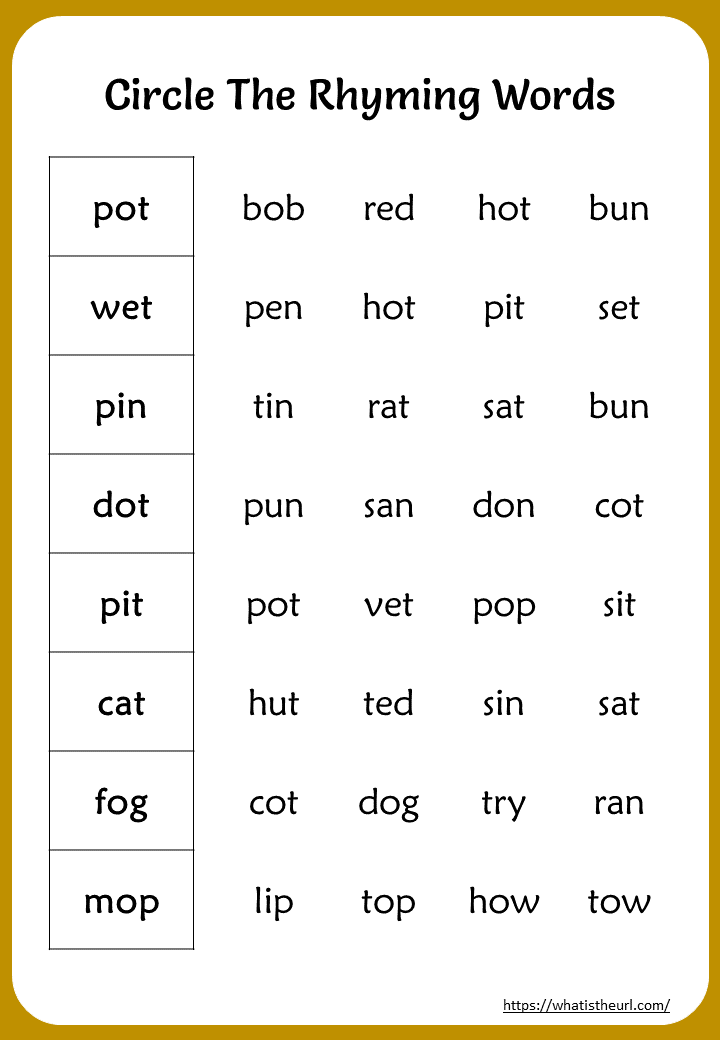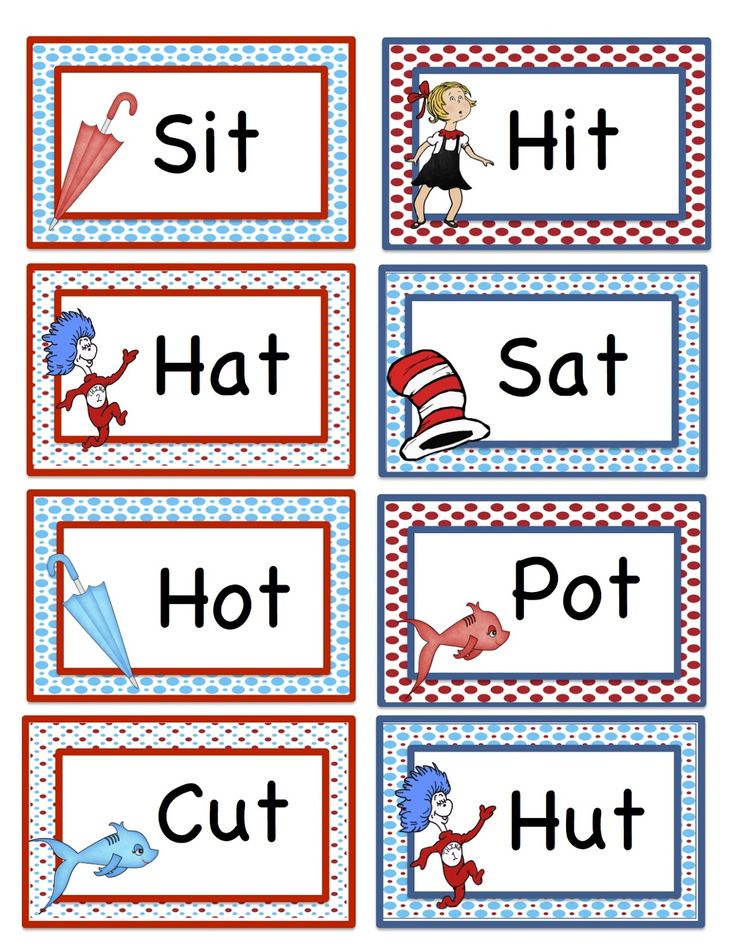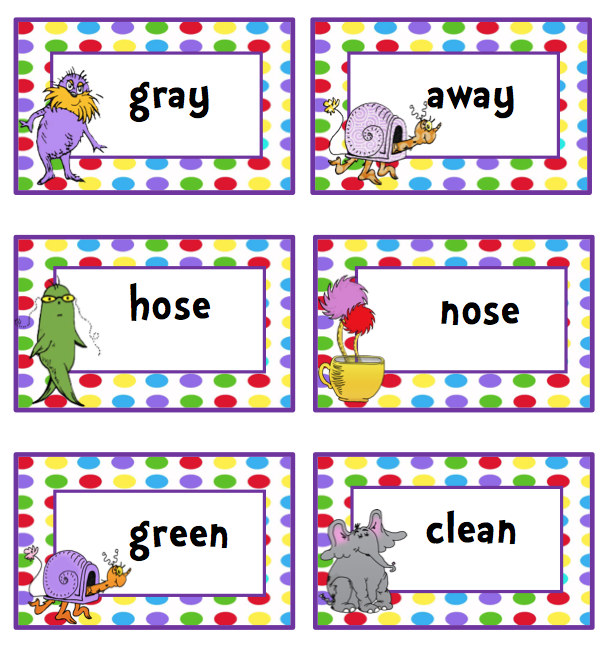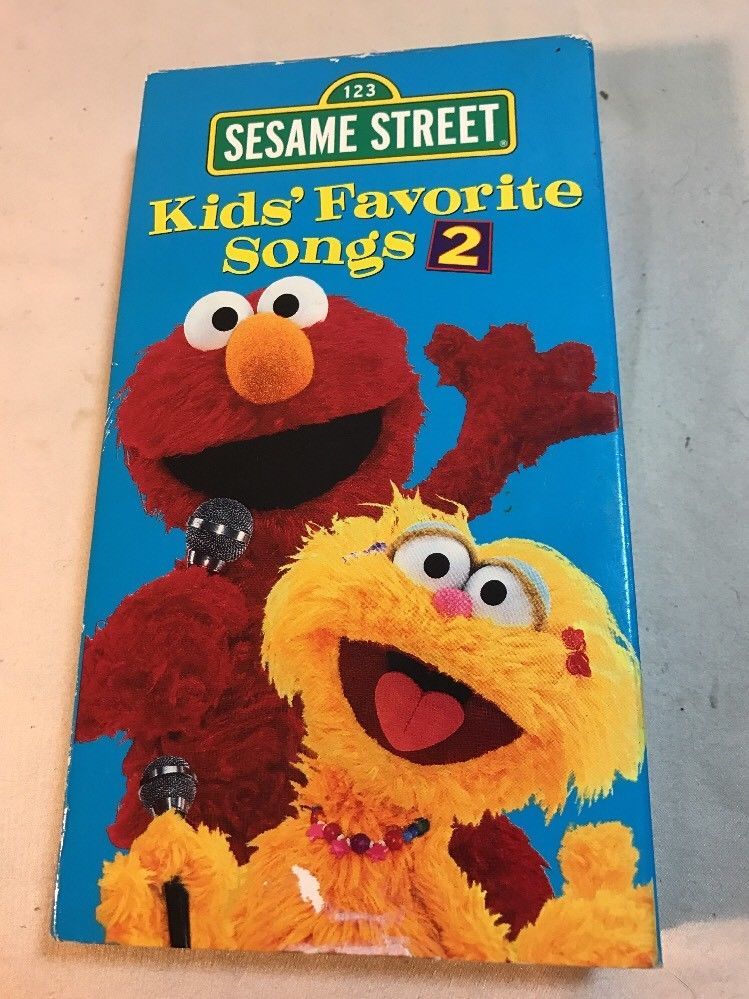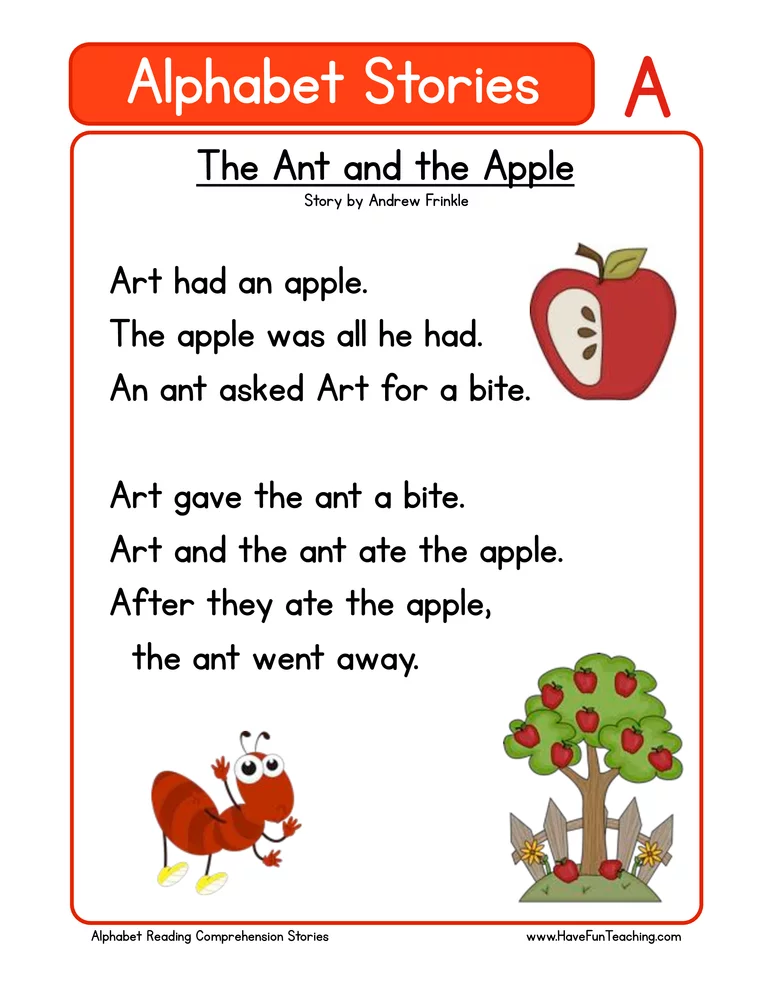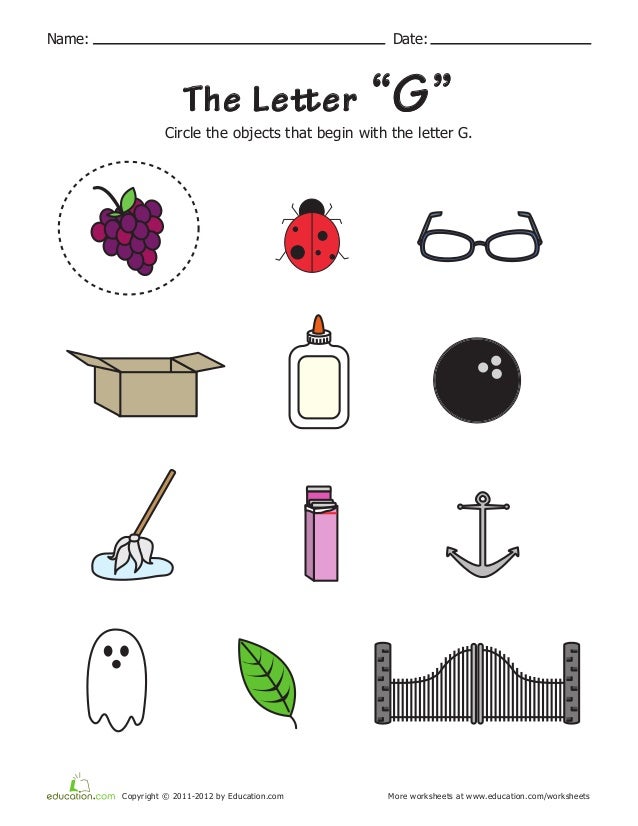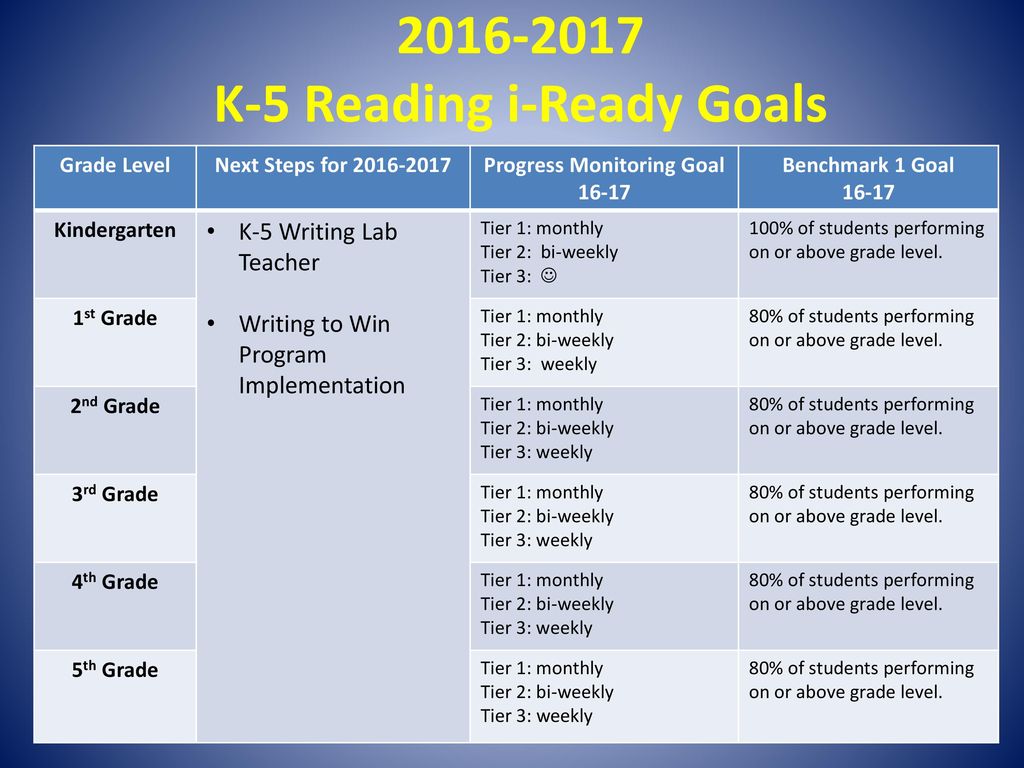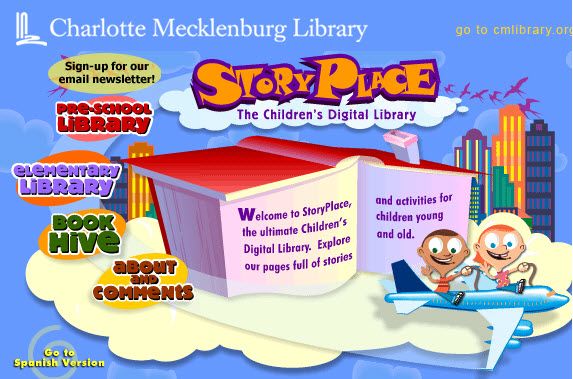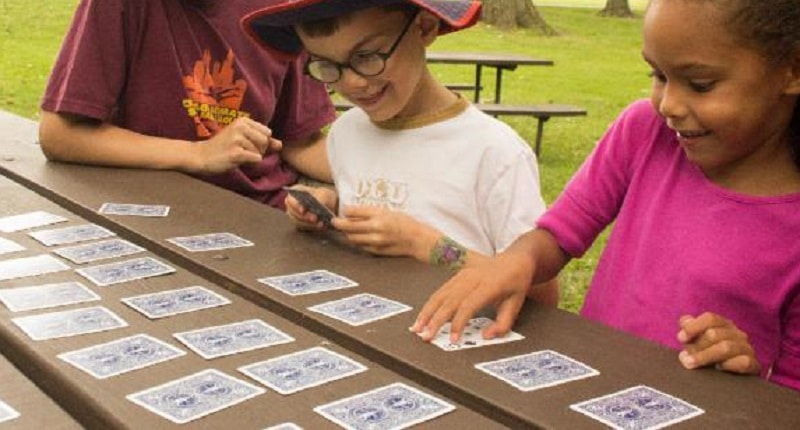Preschool rhyming words
Rhyming Words for Kids (Complete List)
Many of us have fond memories of learning nursery rhymes and rhyming stories when we were children.
These tales are important because they expose children to rhyme, which is essential for language development. Children who have strong early language abilities, including listening and speaking, are shown to develop more robust reading and writing skills.
Helping your child recognize and use rhyme will help them first with their verbal language and then with their literacy. Introducing rhyming words for kids is an excellent way to do that.
Table of Contents
- How Do You Teach Rhyming Words To Children?
- Rhyming Words For Kindergarten
- Rhyming Words For First Grade And Older
- Any Time Can Be Rhyme Time
How Do You Teach Rhyming Words To Children?
Children learn about rhyme in three stages, although there is much overlap as they move from one step to another.
Rhyme Exposure
This is when your child hears rhyming words. This can be in songs while reading rhyming together, or elsewhere. At this stage, you should point out rhyming words to your child.
Rhyme Recognition
Once your child hears a rhyme and points it out, they have reached the stage of rhyme recognition.
Rhyme Production
Finally, your child will be able to produce rhyme themselves. They may take great pride in asking you questions, such as, “Do you know what rhymes with door? More!”
While this may seem like a small thing to you, to them it’s big. Make sure to show them that you’re impressed with their newly-found knowledge.
Ways To Teach Rhyming Words
Make learning to rhyme fun by using some of these methods.
Share Rhyme In Books, Poems, And Songs
Reading rhyming books and poems and singing together will expose your child to rhymes in a fun, relaxing way. Read the complete story or sing the entire song first and then go back and point out the rhymes.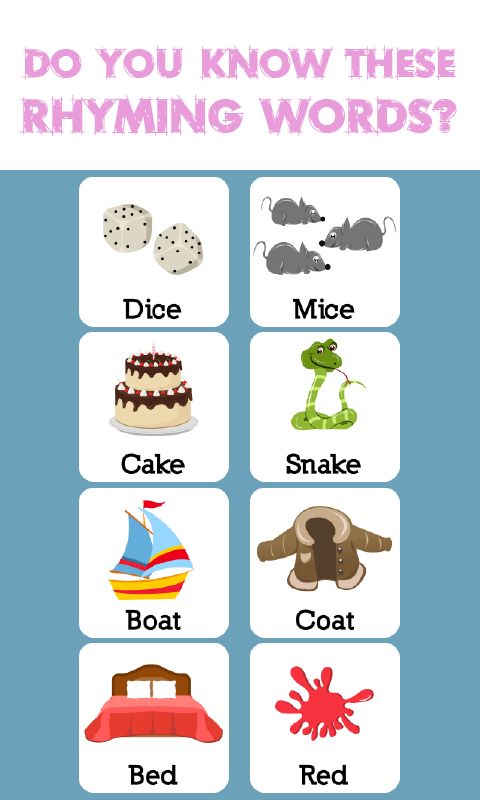
Then, when your child is aware of the concept of rhyming, ask them to point out the pairs of rhyming words they hear or read.
Once your child is familiar with rhymes, read or sing, but don’t say the second rhyming word. Instead, ask your child to provide a suitable rhyme.
Puzzles
Rhyme word puzzles are a fun way for your child to practice pairing up rhyming words.
Clip Cards
Not all rhyming words have the same spelling at the end. To prevent your child from becoming confused by the spelling, use peg cards where your child picks the correct rhyme according to the picture.
Lap Books
Create nursery rhyme lap-books with your child. First, print out the standard nursery rhyme and then have your child replace the original word with another of their own that rhymes.
Rhyming Dictionaries
Help your child find suitable rhyming words with a rhyming dictionary.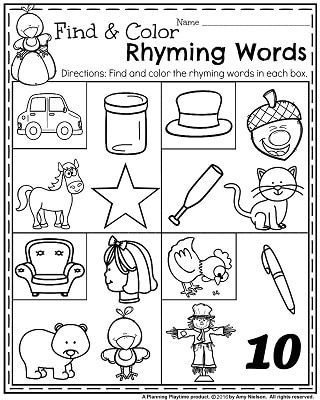 These can be immensely helpful no matter what age you are, especially if you are a teacher, writer, or write lyrics for songs.
These can be immensely helpful no matter what age you are, especially if you are a teacher, writer, or write lyrics for songs.
Rhyming Words For Kindergarten
These are great options for those who are younger than kindergarten or those who are still working on completing that first year in school. These are simple words that won’t be too challenging for this age.
Words That Rhyme With At
- Bat
- Cat
- Fat
- Hat
- Mat
- Pat
- Rat
- Sat
- Vat
- Slat
- Brat
- Flat
- Chat
- Splat
- That
Words That Rhyme With An
- Ban
- Can
- Fan
- Man
- Pan
- Ran
- Tan
- Van
- Flan
- Plan
- Span
- Scan
Words That Rhyme With Ab
- Cab
- Dab
- Drab
- Fab
- Flab
- Grab
- Jab
- Nab
- Lab
- Slab
- Tab
- Crab
Words That Rhyme With Ad
- Add
- Bad
- Clad
- Dad
- Fad
- Had
- Lad
- Mad
- Pad
- Rad
- Sad
Words That Rhyme With All
- Ball
- Call
- Fall
- Hall
- Mall
- Shawl
- Tall
- Wall
- Thrall
- Gall
Words That Rhyme With Ag
- Bag
- Flag
- Drag
- Gag
- Hag
- Nag
- Rag
- Sag
- Tag
- Wag
Words That Rhyme With Ip
- Ship
- Chip
- Clip
- Dip
- Drip
- Flip
- Grip
- Hip
- Kip
- Lip
- Nip
- Pip
- Rip
- Sip
- Slip
- Skip
- Snip
- Tip
- Trip
- Zip
Words That Rhyme With Ap
- App
- Cap
- Clap
- Flap
- Gap
- Lap
- Map
- Nap
- Rap
- Scrap
- Slap
- Snap
- Strap
- Snap
- Tap
- Trap
Words That Rhyme With Id
- Bid
- Did
- Hid
- Kid
- Lid
- Mid
- Rid
- Sid
- Grid
- Slid
- Skid
- Squid
Words That Rhyme With Op
- Bop
- Cop
- Crop
- Clop
- Drop
- Flop
- Hop
- Mop
- Plop
- Prop
- Shop
- Stop
- Swap
- Top
Words That Rhyme With Am
- Clam
- Cram
- Dam
- Gram
- Ham
- Jam
- Lamb
- Ram
- Slam
- Spam
- Tram
Words That Rhyme With Ig
- Big
- Dig
- Fig
- Gig
- Pig
- Rig
- Twig
- Swig
- Wig
- Brig
Words That Rhyme With Ar
- Are
- Bar
- Car
- Far
- Jar
- Scar
- Star
- Tar
- Ajar
- Guitar
Words That Rhyme With Aw
- Awe
- Caw
- Claw
- Draw
- Flaw
- Paw
- Raw
- Saw
- Straw
- Thaw
Words That Rhyme With Ay
- Bay
- Clay
- Day
- Gray
- Hay
- Jay
- Lay
- May
- Pay
- Play
- Pray
- Say
- Stay
- Spray
- Sway
- They
- Way
- Tray
Words That Rhyme With Ell
- Bell
- Cell
- Dell
- Fell
- Gel
- Sell
- Shell
- Smell
- Spell
- Tell
- Well
- Yell
Words That Rhyme With En
- Den
- Men
- Pen
- Ten
- Then
- When
- Wren
- Zen
- Ben
- Ken
Words That Rhyme With Et
- Bet
- Get
- Jet
- Let
- Met
- Net
- Pet
- Set
- Wet
- Yet
Words That Rhyme With Ew
- Blue
- Blew
- Brew
- Chew
- Clue
- Crew
- Cue
- Do
- Dew
- Drew
- Ewe
- Flew
- Glue
- Grew
- Knew
- New
- Phew
- Shoe
- Shoo
- Stew
- Through
- Threw
- True
- Two
- View
- You
- Who
- Zoo
Words That Rhyme With In
- Bin
- Chin
- Din
- Fin
- Grin
- Inn
- Pin
- Shin
- Skin
- Spin
- Twin
- Thin
- Tin
- Win
Words That Rhyme With It
- Bit
- Fit
- Hit
- Kit
- Knit
- Lit
- Mit
- Nit
- Pit
- Sit
- Quit
- Skit
- Slit
- Spit
Words That Rhyme With Od
- Cod
- Bod
- Odd
- Nod
- Plod
- Prod
- Rod
- Squad
- Trod
- Pod
Words That Rhyme With Og
- Bog
- Blog
- Cog
- Clog
- Dog
- Fog
- Frog
- Hog
- Jog
- Log
Words That Rhyme With Op
- Top
- Chop
- Cop
- Crop
- Drop
- Flop
- Hop
- Mop
- Pop
- Shop
- Stop
Words That Rhyme With Ot
- Blot
- Cot
- Clot
- Dot
- Got
- Hot
- Knot
- Not
- Plot
- Pot
- Rot
- Shot
- Spot
Words That Rhyme With Ow
- Bow
- Brow
- Cow
- How
- Now
- Pow
- Sow
- Row
- Vow
- Wow
Rhyming Words For First Grade And Older
These are useful rhyming words for first graders and above with an expanding skillset.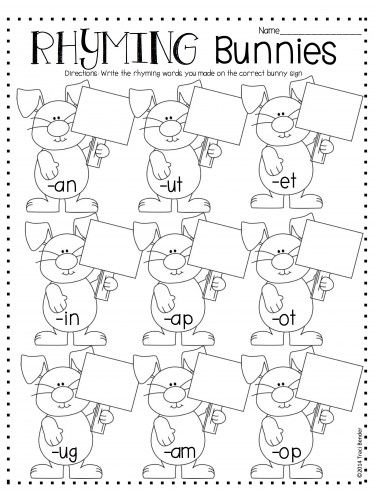
Words That Rhyme With Ake
- Ache
- Bake
- Cake
- Brake
- Break
- Fake
- Flake
- Lake
- Make
- Quake
- Rake
- Sake
- Take
- Sneak
- Steak
- Stake
- Wake
Words That Rhyme With Ale
- Bail
- Bale
- Kale
- Dale
- Fail
- Hail
- Male
- Nail
- Pail
- Pale
- Rail
- Sail
- Snail
- Sale
- Stale
- Tail
- Tale
- Trail
- Whale
- Detail
- Toenail
Words That Rhyme With Ain
- Brain
- Cane
- Chain
- Crane
- Drain
- Gain
- Grain
- Lane
- Mane
- Main
- Pane
- Pain
- Plain
- Plane
- Reign
- Rain
- Sprain
- Stain
- Strain
- Train
- Again
Words That Rhyme With Or
- Door
- Chore
- Core
- Four
- For
- Sore
- Floor
- Door
- More
- Oar
- Snore
- Soar
- Store
- Score
Words That Rhyme With School
- Cool
- Cruel
- Drool
- Fool
- Fuel
- Ghoul
- Jewel
- Mule
- Pool
- Spool
- Tool
- Who’ll
- You’ll
- Yule
Any Time Can Be Rhyme Time
Whether you are playing rhyme I-spy, singing nursery rhymes, or reading a book of children’s poems, the time you spend sharing rhymes with your child is helping them develop spoken language.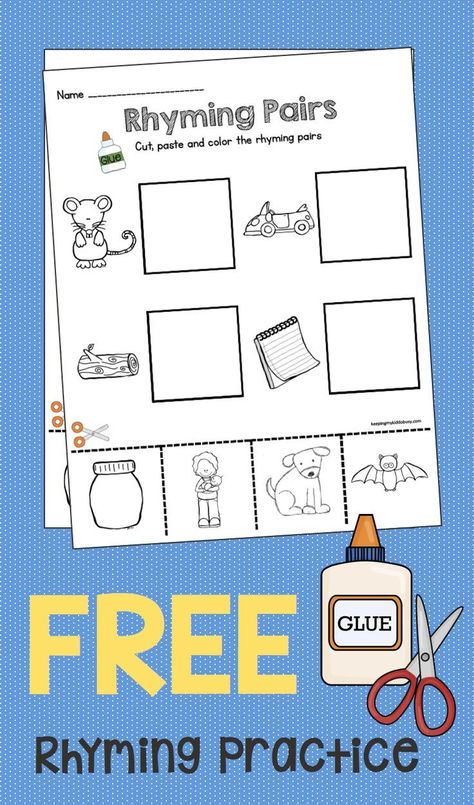
Build a little rhyme time into every day and give your child an advantage.
Introducing rhyming words is an excellent way to lay a solid foundation for literacy.
Feedback: Was This Article Helpful?
Thank You For Your Feedback!
Thank You For Your Feedback!
What Did You Like?
What Went Wrong?
List of Rhyming Words for Kids: Early Language Development
We all have memories of our childhood learning nursery rhymes and rhyming stories. Some people still remember the whole rhyming poem with the tone of it, this teaches us that rhyming words for kids are essential objects to develop early language abilities such as listening and speaking. Children with strong language abilities are shown to develop rigorous reading and writing skills.
Helping your child with recognition and identification of rhyming words helps them dually with verbal language polishing and the variety of vocabulary of the language. Introducing rhyming words to your younger ones also helps them with literacy in that language. Children learn to rhyme in three stages, they are not distinct from each other as they overlap with each other.
Children learn to rhyme in three stages, they are not distinct from each other as they overlap with each other.
Learning courses for your kids! Get free trial here
Also read: Simple English Words for Daily Use for Kids: List Of Words for Kids to Use Daily
- Exposure – Introducing them with rhyming words can be as simple as singing a nursery song, hearing the particular pattern in the song can aid the learning of the song by the kid. Exposing them to a variety of rhyming songs while reading and singing them together.
- Recognition – After singing and hearing the song child should be able to recognize the pattern of the rhyme also called rhyme recognition.
- Production – After exposure and recognition of rhymes your child will be able to produce rhyme themselves. Asking questions to rhyme simple daily used words such as jug, door, the cup will make them curious to explore more.
Also read: Opposite Words in English for Kids: Ways to Help them Improve their Vocabulary
How to Teach –
Many methods and materials are available to start the learning with rhyme for kids.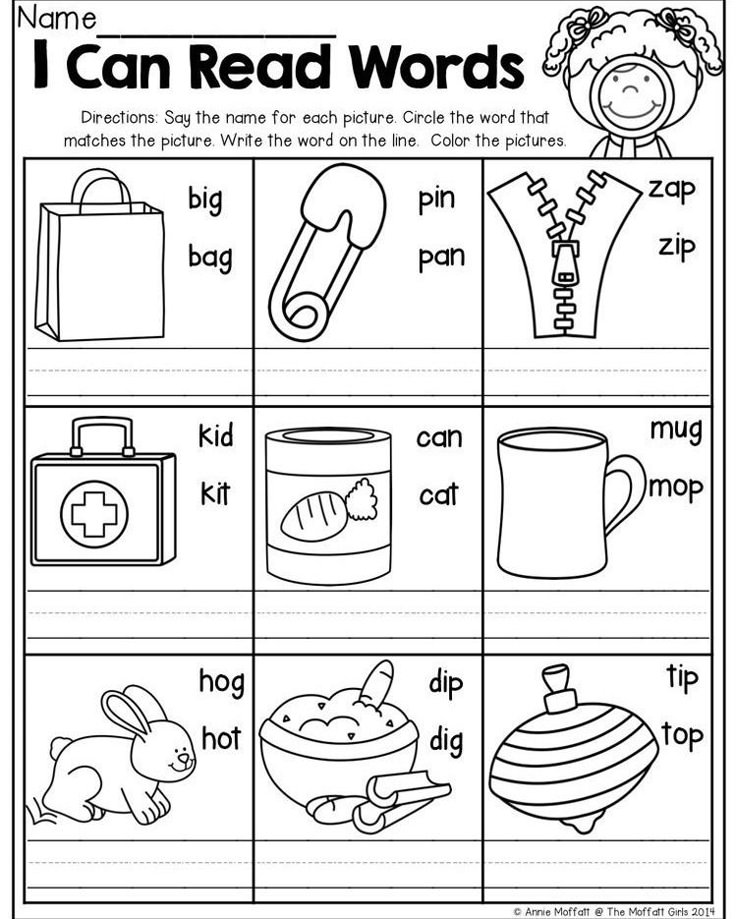 Using multiple ways to teach them the concept of rhyming and introducing them with new words works better and kids also enjoy it.
Using multiple ways to teach them the concept of rhyming and introducing them with new words works better and kids also enjoy it.
Following are the common ways that can be used as an introduction with rhyming words for your kid list.
- Reading rhyme books, poems, and songs.
- Puzzles containing rhyming words.
- Clipping cards
- Lap books
- Rhyming dictionaries
Also read: Jolly Phonics Tricky Words for Kids: How to Teach Them to Kids?
List of Rhyming Words for Kids –
The following list of rhyming words is useful for nursery level and first-grade kids, as your child makes gradual improvement you can switch into more complex rhymes.
A) Rhyming words with “at”
- Bat
- Cat
- Fat
- Hat
- Mat
- Pat
- Rat
- Sat
- Vat
- Slat
- Brat
- Flat
- Chat
- Splat
- That
B) Rhyming words with “an”
- Ban
- Can
- Fan
- Man
- Pan
- Ran
- Tan
- Van
- Flan
- Plan
- Span
- Scan
C) Rhyming Words with “ab”
- Cab
- Dab
- Drab
- Fab
- Flab
- Grab
- Jab
- Nab
- Lab
- Slab
- Tab
- Crab
D) Rhyming Words with “ad”
- Add
- Bad
- Clad
- Dad
- Fad
- Had
- Lad
- Mad
- Pad
- Rad
- Sad
E) Rhyming Words with “all”
- Ball
- Call
- Fall
- Hall
- Mall
- Shawl
- Tall
- Wall
- Thrall
- Gall
F) Rhyming Words with “ag”
- Bag
- Flag
- Drag
- Gag
- Hag
- Nag
- Rag
- Sag
- Tag
- Wag
G) Rhyming Words with “ip”
- Ship
- Chip
- Clip
- Dip
- Drip
- Flip
- Grip
- Hip
- Kip
- Lip
- Nip
- Pip
- Rip
- Sip
- Slip
- Skip
- Snip
- Tip
- Trip
- Zip
H) Rhyming Words with “ap”
- App
- Cap
- Clap
- Flap
- Gap
- Lap
- Map
- Nap
- Rap
- Scrap
- Slap
- Snap
- Strap
- Snap
- Tap
- Trap
I) Rhyming Words with “id”
- Bid
- Did
- Hid
- Kid
- Lid
- Mid
- Rid
- Sid
- Grid
- Slid
- Skid
- Squid
J) Rhyming Words with “op”
- Bop
- Cop
- Crop
- Clop
- Drop
- Flop
- Hop
- Mop
- Plop
- Prop
- Shop
- Stop
- Swap
- Top
K) Rhyming Words with “am”
- Clam
- Cram
- Dam
- Gram
- Ham
- Jam
- Lamb
- Ram
- Slam
- Spam
- Tram
L) Rhyming Words with “ig”
- Big
- Dig
- Fig
- Gig
- Pig
- Rig
- Twig
- Swig
- Wig
- Brig
M) Rhyming Words with “ar”
- Are
- Bar
- Car
- Far
- Jar
- Scar
- Star
- Tar
- Ajar
- Guitar
N) Rhyming Words with “aw”
- Awe
- Caw
- Claw
- Draw
- Flaw
- Paw
- Raw
- Saw
- Straw
- Thaw
O) Rhyming Words with “ay”
- Bay
- Clay
- Day
- Gray
- Hay
- Jay
- Lay
- May
- Pay
- Play
- Pray
- Say
- Stay
- Spray
- Sway
- They
- Way
- Trap
Learning courses for your kids! Get free trial here
P) Rhyming words with “ell”
- Bell
- Cell
- Dell
- Fell
- Gel
- Sell
- Shell
- Smell
- SpellPTell
- Well
- Yell
Q) Rhyming words with “en”
- Den
- Men
- Pen
- Ten
- Then
- When
- Wren
- Zen
- Ben
- Ken
R) Rhyming words with “et”
- Bet
- Get
- Jet
- Let
- Met
- Net
- Pet
- Set
- Wet
- Yet
S) Rhyming words with “ew”
- Blue
- Blew
- Brew
- Chew
- Clue
- Crew
- Cue
- Dew
- Drew
- Ewe
- Flew
- Glue
- Grew
- Knew
- New
- Phew
- Shoe
- Shoo
- Stew
- Through
- Threw
- True
- Two
- View
- You
- Who
- Zoo
T) Rhyming Words with “in”
- Bin
- Chin
- Din
- Fin
- Grin
- Inn
- Pin
- Shin
- Skin
- Spin
- Twin
- Thin
- Tin
- Win
U) Rhyming Words with “it”
- Bit
- Fit
- Hit
- Kit
- Knit
- Lit
- Mit
- Nit
- Pit
- Sit
- Quit
- Skit
- Slit
- Spit
V) Rhyming Words with “od”
- Cod
- Bod
- Odd
- Nod
- Plod
- Prod
- Rod
- Squad
- Trod
- Pod
W) Rhyming words with “og”
- Bog
- Blog
- Cog
- Clog
- Dog
- Fog
- Frog
- Hog
- Jog
- Log
X) Rhyming words with “op”
- Top
- Chop
- Cop
- Crop
- Drop
- Flop
- Hop
- Mop
- Pop
- Shop
- Stop
Y) Rhyming words with “ot”
- Blot
- Cot
- Clot
- Dot
- Got
- Hot
- Knot
- Not
- Plot
- Pot
- Rot
- Shot
- Spot
Z) Rhyming words with “ow”
- Bow
- Brow
- Cow
- How
- Now
- Pow
- Sow
- Row
- Vow
- Wow
Conclusion
The rhyming words occupy the majority of our childhood, teaching kids nursery rhymes makes them more receptive and fun to learn.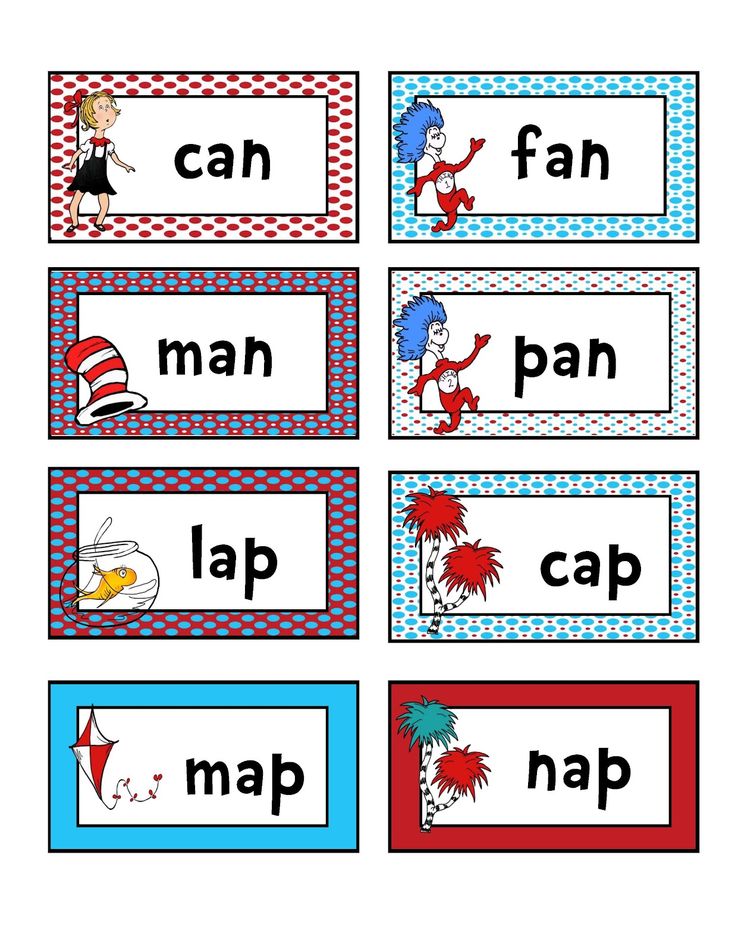 Learning rhymes is way more than just learning the words, it helps children with language development which is considered as one of the vital skills of communication, making them language smart. The successful implication of these rhyme words in front of the children can make them smart in spoken language.
Learning rhymes is way more than just learning the words, it helps children with language development which is considered as one of the vital skills of communication, making them language smart. The successful implication of these rhyme words in front of the children can make them smart in spoken language.
Building a rhyming skill little by little through nursery rhymes, reading rhyming stories, everyday object rhyming, and including other activities such as lap book, puzzles, word games. Teaching your kid rhyme words will solidify the foundation of their literacy, and give them an advantage of developed language skills. Hopefully, you found this article helpful. You can share your view with us by commenting in the below box.
Also read: Why do Kids Today have to Learn about Verbs, Adverbs, Pronouns etc? Why is Grammar Important?
Game rhymes
Sergeeva T.V.
Chain rhyme
GOALS
- Teach children to answer with a word consonant with the one named.
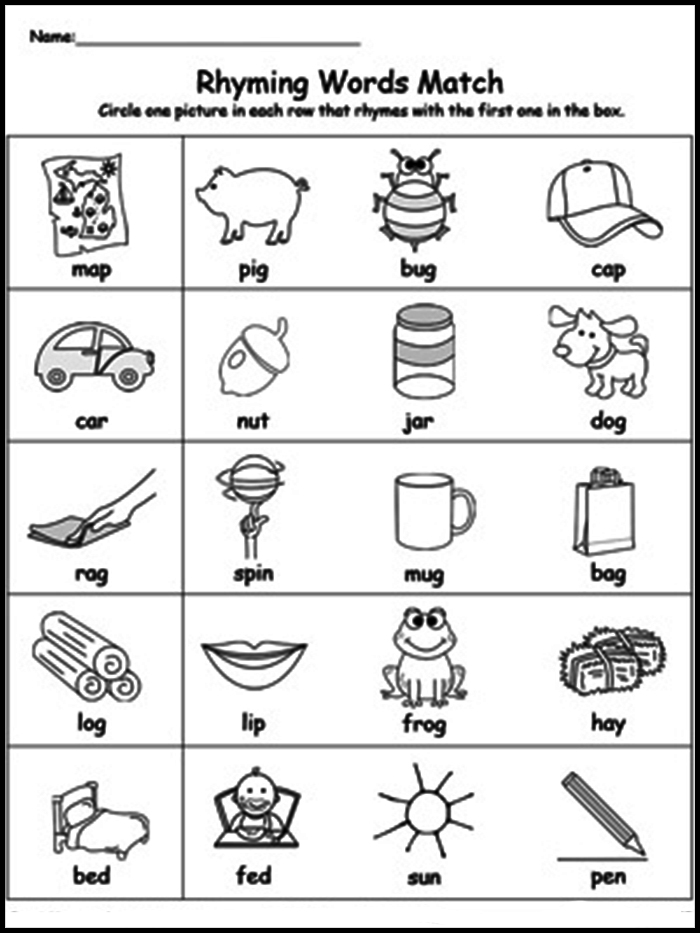
- Learn to feel the rhythm, rhyme.
Teacher
Guys, let's play soon.
We will choose different words!
Say any words, okay?
But only such that it turns out ...
(smoothly).
What words similar in sound can be found for the word bird?
Children. Titmouse, small, singer.
Teacher. Speaking of bunny?
Children. Know-it-all, dunno, runaway, jumper, runaway.
Teacher. Speaking of cat?
Children. Spoon, bowl, basket, accordion, midge, potato, window, leg, earring, matryoshka.
Teacher. Speaking of mouse?
Children. A bump, a puff, a puff.
Teacher. Speaking of cancer?
Children. Poppy, tank, varnish, like.
Variant
The teacher throws the ball and pronounces a word, the one who catches the ball answers with a word consonant with the name.
Stove - sheep, river.
Birdie - titmouse.
Magpie - white-sided.
Bunny - runaway.
Find a pair
GOALS
- To teach children to match words that are similar and different in sound-rhythmic structure.
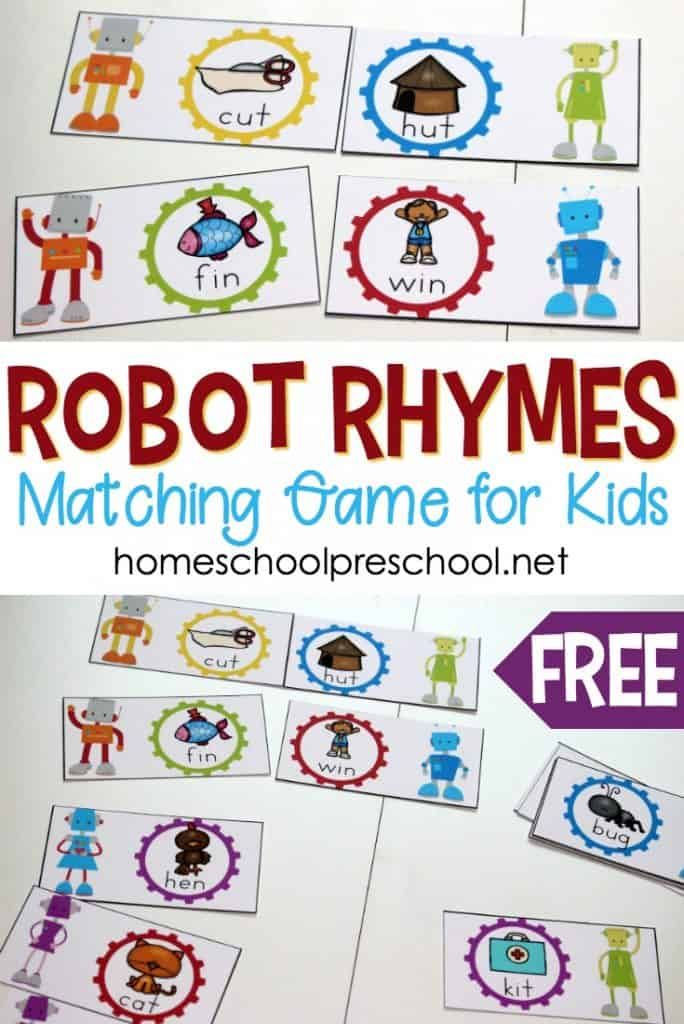
- Develop visual memory.
Teacher. Connect the words of the two columns so that you get a rhyme.
Edge Grass
Firewood Scallop
Herringbone Hut
Cockerel Needle
White-sided Fox
Bunny Cornflower
Magpie Sister
Titmouse Flower
Cowardly Bird
Variant
Picture words can be suggested. Children find a picture that is similar in sound-rhythmic structure.
Game with pictures
OBJECTIVES
- Teach children to choose a rhyme for the word - the name of the picture.
- Develop language flair.
First you need to prepare cards with pictures from which you can make rhyming words, for example, a picture of a pipe, another picture of a sponge. All pictures are located on a large table or on a carpet on the floor. Children distribute them in rhymes. For example, near the picture of a river there is a picture of a stove, a donkey is a goat, a cat is a spoon, a watering can is a snake, etc.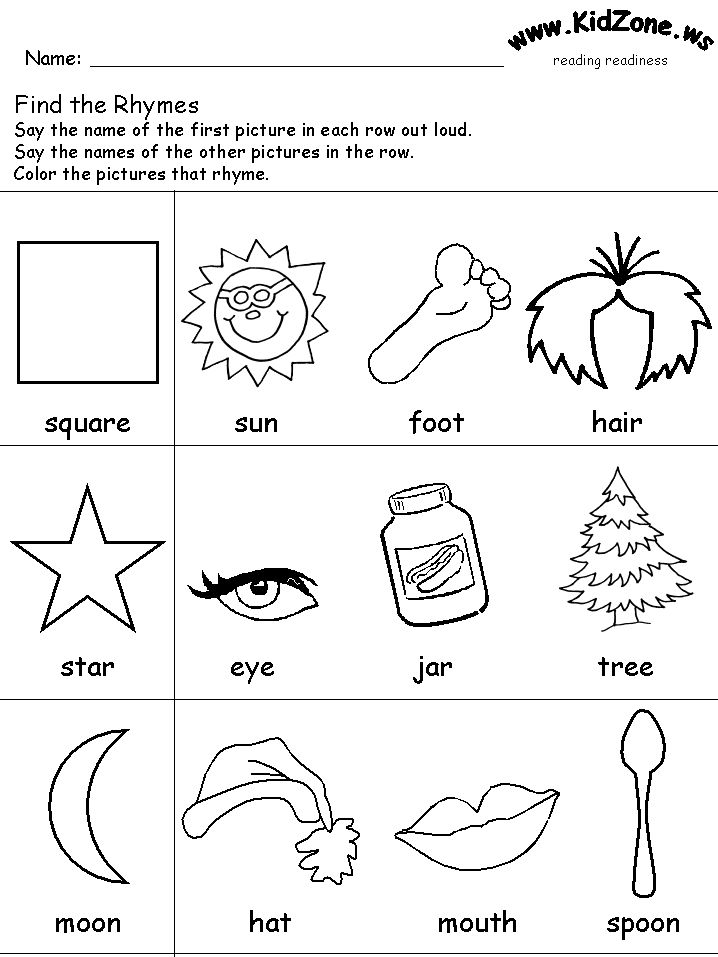
Options
1. One child takes a picture, the other finds a picture with a rhyming word. Both say their words out loud. The group repeats.
2. Place pictures face down. Open one picture and say the corresponding word out loud. Whoever can name the rhyming word gets a picture and can open the next one.
3. One picture is opened. All children draw an object called a rhyming word. Here the solution is represented by a figure.
Say a word
OBJECTIVES
- Teach children to write their own rhyming lines.
Teacher. You already know how to pick up rhyming words. Today we will try to make suggestions.
Where were you, squirrel, walking?
Children
I collected nuts.
Teacher
The squirrel jumped fast,
Children
Lost all the nuts.
Teacher
Whom did you find, hedgehog?
Children
I brought a squirrel to you.
Teacher
Yesterday we played in the forest,
Children
We saw a huge mushroom.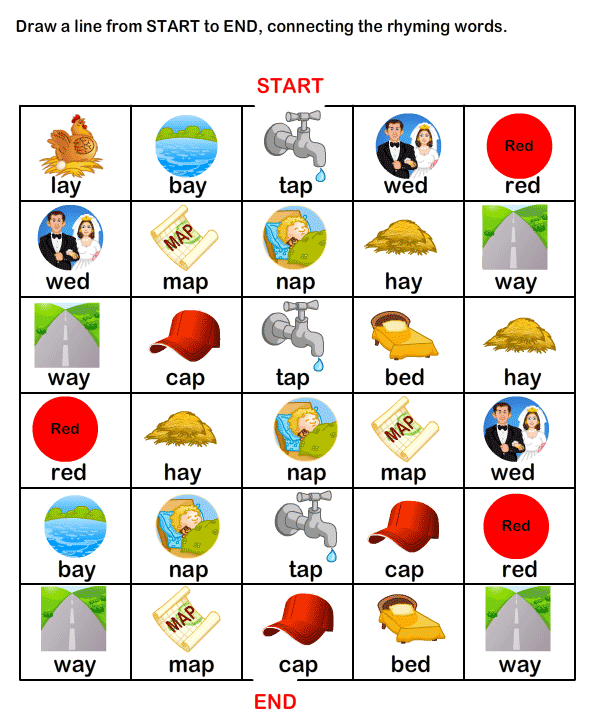
Teacher
A fungus stood aside,
Children
The hedgehog couldn't find it.
Teacher
Like a little hedgehog
Children
Shoes have become torn.
Teacher
And our squirrel
Children
Clean plates.
We are poets
OBJECTIVES
- To teach children to compose quatrains that contain a whole story.
Teacher
The teacher says to Paraska:
“What fairy tales have you read?”
Paraska thinks, "Oh,
I haven't read any!"
And behind someone whispers:
"Turnip!"
Paraska yelled: "Cap!"
Today we will also come up with funny poems. What or who do you want to write about?
Children answer.
Let's talk about the cat, let's support Serezha. I will write down what you tell me, and then I will read out what we have done.
Children come up with unexpected situations with a cat by rhyming words.
Children. The cat sat on the window. The cat saw a midge. The cat took a basket and went for potatoes.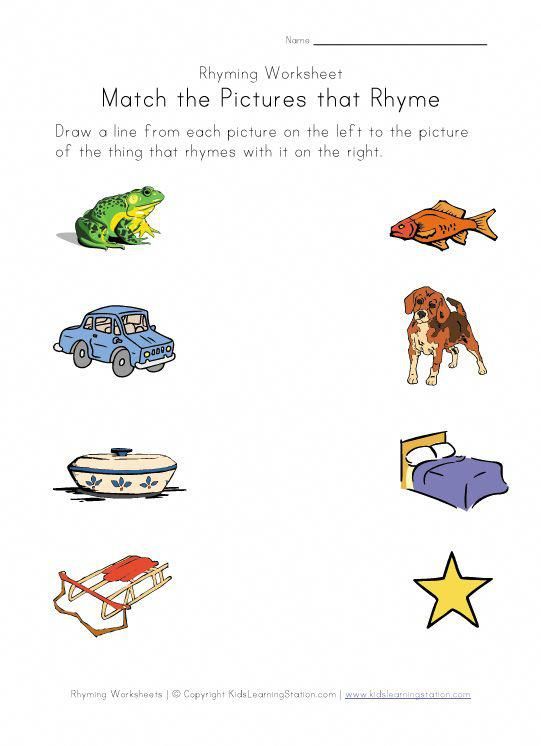 The cat sat on the window and dangled its legs. The cat put all the spoons in a basket.
The cat sat on the window and dangled its legs. The cat put all the spoons in a basket.
Council. The most important thing is not to leave the words of children without attention. And for each word come up with a rhyme.
Stories to rhyme
OBJECTIVES
• Teach children to write simple rhymes.
• Learn to distinguish between the sound and semantic sides of speech.
Teacher. Do you already know what rhyme is in poetry?
For example, the rhyme for the word flower can be a leaf, and for the word porridge - curdled milk. Bear cub Misha wants to teach you how to do it. They drew funny pictures with Druzhok and came up with inscriptions in verse for them. And the last word in the second line of each rhyme was not completed. Find the right rhyme yourself. It's not difficult at all.
A friend is behind the fence and looks timidly,
How cleverly a friend is wielding ... (with chalk).
Druzhka is disturbed by one thought
Will they see ... (elephant).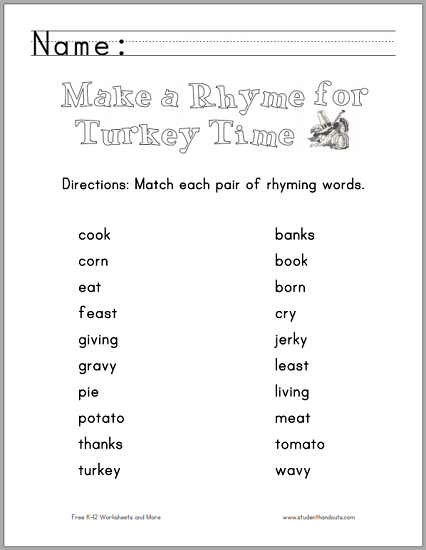
When Mishka gets tired of playing
Let him stand at the gate ...
(mouse).
All morning they searched and searched until
Found a new bowl...
(Druzhka).
Help Dunno compose poetry
OBJECTIVES
• To teach children to distinguish between sound and semantic aspects of speech.
The teacher brings N. Nosov's book "Adventure Dunno".
Teacher. Guys, did you recognize this book? Today I will tell you how Dunno wrote poetry.
... After Dunno did not turn into an artist, he decided to become a poet and compose poetry ... Dunno came to the poet Tsvetik and said:
- Listen, Tsvetik, teach me to compose poetry. I also want to be a poet.
- Do you know what a rhyme is?
- Rhyme? No, I do not know.
- Rhyme is when two words end in the same way, - explained Tsvetik. - For example: a duck is a joke, a shortbread is a walrus. Understood?
- Understood.
- Well, say a rhyme for the word "stick".
- Herring, - Dunno answered.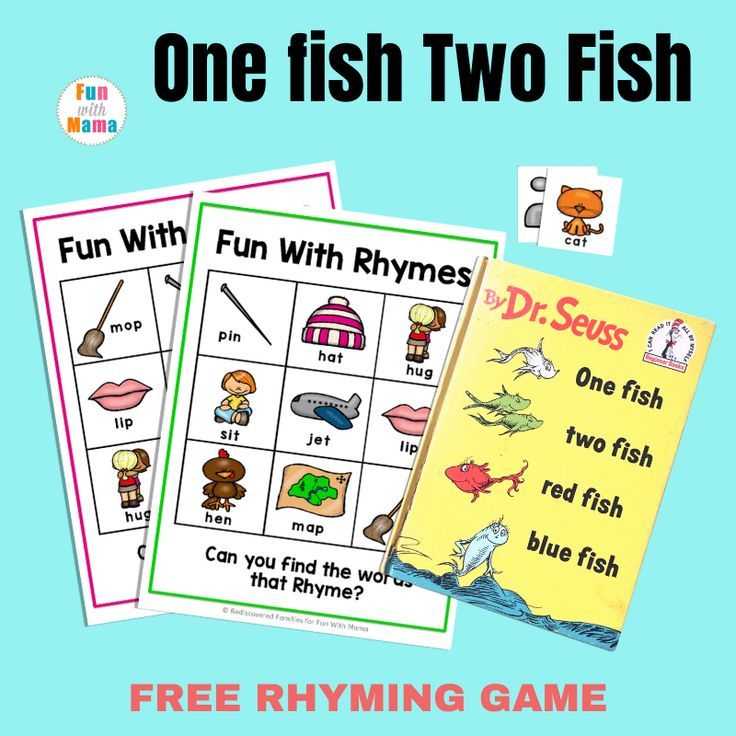
Guys, help Dunno.
Game in progress.
All day long Dunno wrote poetry and finally came up with:
Znayka went for a walk to the river,
Jumped over a sheep.
Hurry was hungry -
Swallowed a cold iron.
Under Avoska's pillow
There is a sweet cheesecake.
Find rhymes
OBJECTIVES
- Teach children to identify rhyming words from a text by comparing them.
Teacher. Today I will read B. Shergin's story "Rhymes" to you, and your task is to hear rhyming words. Do you agree?
Shish went to the city on his business. It was summer, it was hot.
An uncle rides a horse ahead. Shish and asked him to give a lift. He sat down next to his uncle. But Shish cannot sit silently. He is only silent when he sleeps. He says:
- Uncle, let's play rhymes.
- What is it - rhymes?
- And let's say it so that it was smooth.
- Come on.
- Here, uncle, what was your father's name?
- My dad's name was Kuzma.
Shish says:
I'll take your Kuzma
by the beard!
- Why are you going to take my dad by the beard?
Shish says:
- This, uncle, is for rhyme. Tell me what your grandfather's name was.
- My grandfather's name was Ivan.
Shish says:
Your grandfather Ivan
Put the cat in his pocket.
The cat is crying and sobbing,
Your grandfather is scolding.
The uncle got excited:
- Why would my grandfather put a cat in his pocket? Why are you picking up such rubbish?
- This is an uncle, for rhyme.
- I'll tell you a rhyme, what's your name?
- My name is… Fedya.
Uncle says:
If you are Fedya,
Then catch a bear in the forest.
Ride a bear,
Get off my horse!
- Uncle, I was joking. My name is not Fedya, but Stepan.
Uncle says:
If you are Stepan,
Get on the eroplane,
On the eroplane and fly,
Get off my horse!
- Uncle, I was joking. My name is not Stepan, but… Silantiy.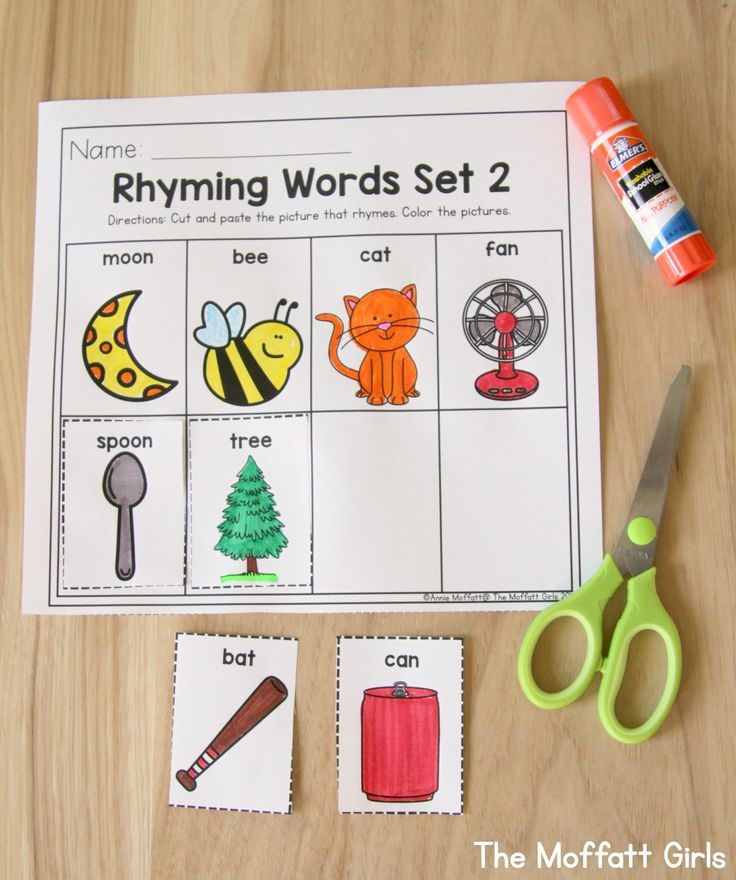
Uncle says:
If you're Silantius,
Then get off my horse.
- What are you, uncle, there is no such word - “tears”.
- Although not, get off anyway!
Shisha had to get off the cart. It serves him right. If a kind person carries you on a horse, you sit silently, and do not invent all sorts of trifles.
Children find rhyming words in the text and name them.
Teaching preschoolers how to compose rhyming texts | Article on the development of speech on the topic:
Teaching preschoolers to compose rhyming texts
Mansurova Yu.S.
Teacher of the senior group No. 8 "Pencils"
One of the important tasks of teaching preschoolers is the formation of coherent speech. Children of senior preschool age should be able to independently compose monologue texts of a different nature. Signs of such speech are arbitrariness, expansion and coherence. In a monologue, the child constructs statements independently.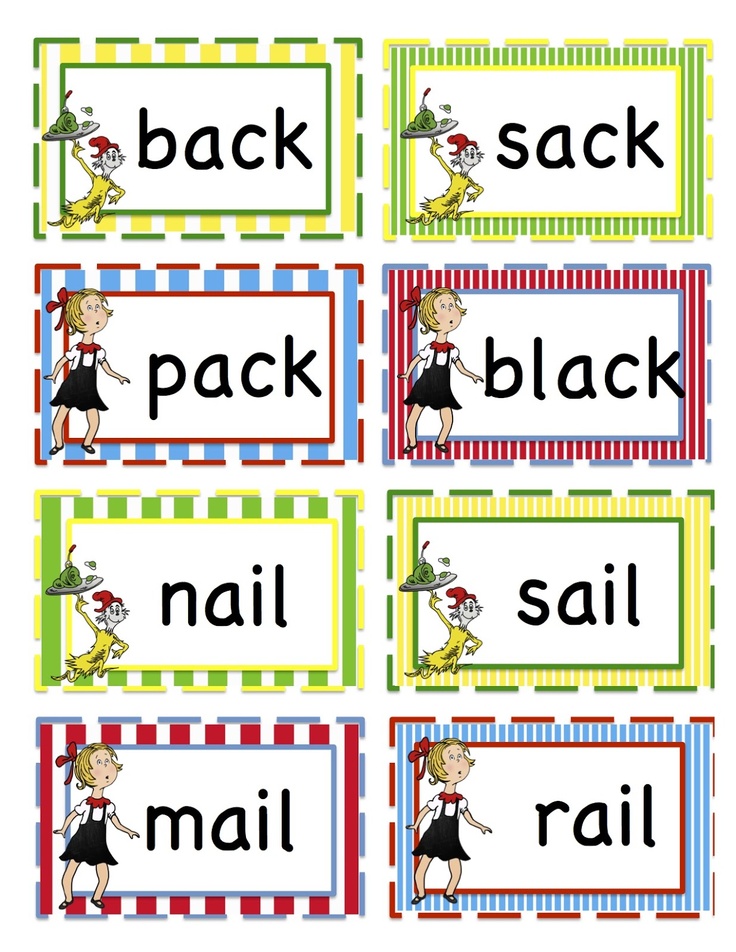 He himself chooses the verbal form for expressing the content that he communicates, outlines the sequence of individual parts, links of the content. Whether it is a description of an object, phenomenon or event. It is important for the teacher: does the child own various means for expressing thoughts, are the same words and phrases repeated in one segment of speech?
He himself chooses the verbal form for expressing the content that he communicates, outlines the sequence of individual parts, links of the content. Whether it is a description of an object, phenomenon or event. It is important for the teacher: does the child own various means for expressing thoughts, are the same words and phrases repeated in one segment of speech?
Such a form of monologue text as a poem contributes to the fact that children develop the ability to feel the artistic expressiveness of the word. Here the foundation is laid for the formation of love for the native language, its accuracy, accuracy, imagery. In practice, teaching preschoolers to create poetic texts, in our opinion, is given little attention. This fact is explained by the lack of effective methods and techniques for teaching children rhythm and rhyming. Without the word play that they contain, the child will not fully master his native language. After all, a rhymed text helps to express not only thoughts, but also feelings, experiences of a person.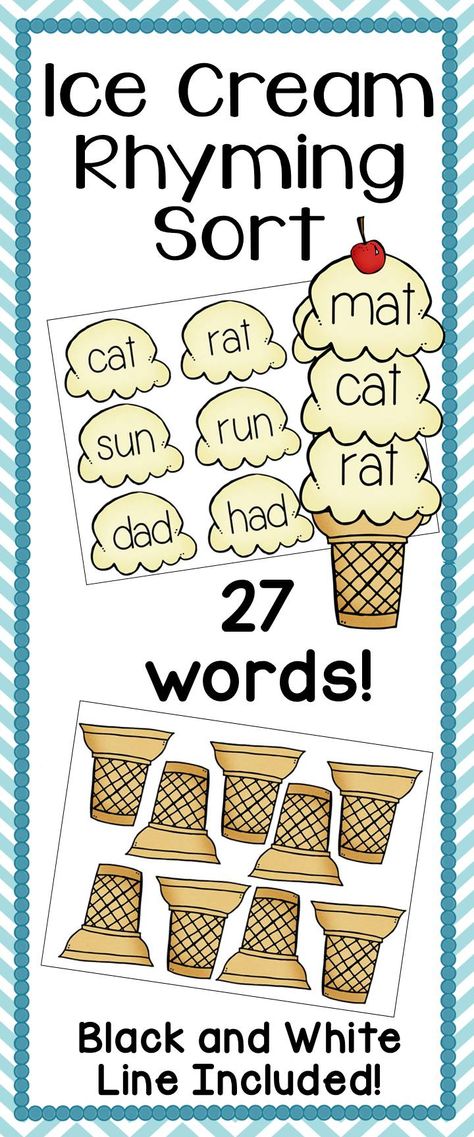
L, F. Pavlenko is working on the problem of teaching children word formation, rhyming, and the selection of descriptive characteristics of an object. The teacher proved the possibility of teaching children to compose poetic texts.
Researchers of the formation of children's speech and the characteristics of its development have found that children aged 3-5 have a natural need for versification. After all, a cheerful, funny, frightening or teasing poem is a “verbal toy”. And at the same time, children's poetry is a special, peculiar only to children, view of the world, embodied in the word.
In the methodological developments devoted to familiarizing children with the poetic word, it is rightly pointed out that it is necessary to form an interest in poetic texts. At the initial stages of work, it is necessary to arouse in children an interest in works of art filled with fantasy, humor, word games in rhymes, rhythms, and onomatopoeia. How can one learn to play poetry and with poetry? Of course, they need to be read to children, memorized.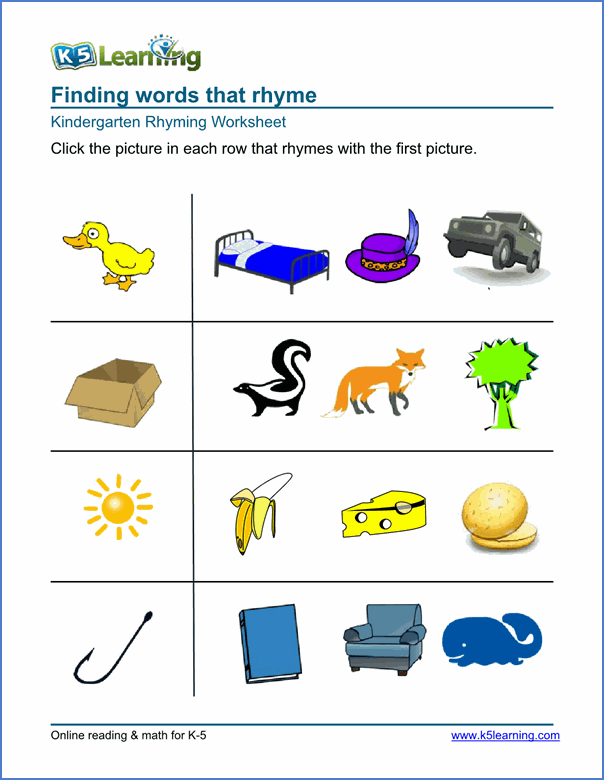 Otherwise, the game will not take place. The rules of the game are in the poem itself, in its purpose and content. Everyone knows, for example, nursery rhymes, fables, counting rhymes, teasers, tongue twisters, laughter and other poetic "hype", which is considered to be empty fun. All these are primarily games that teach either the rapid pronunciation of a difficult phrase, or a complex sound combination.
Otherwise, the game will not take place. The rules of the game are in the poem itself, in its purpose and content. Everyone knows, for example, nursery rhymes, fables, counting rhymes, teasers, tongue twisters, laughter and other poetic "hype", which is considered to be empty fun. All these are primarily games that teach either the rapid pronunciation of a difficult phrase, or a complex sound combination.
The more often poems are repeated, the more riddles, jokes, onomatopoeia, shifters and other games can be seen in them. This, in turn, will help to take another step towards a new hobby - writing your own rhyming texts, and later your own poems. The acquired ability to compose is also a game and, at the same time, a reward for work. It opens the way for the child to the priceless treasures of world poetry and to his own speech creativity.
As a result of a practical study, the following stages of work were identified:
- Acquaintance of children with the algorithm for creating a short poetic text.
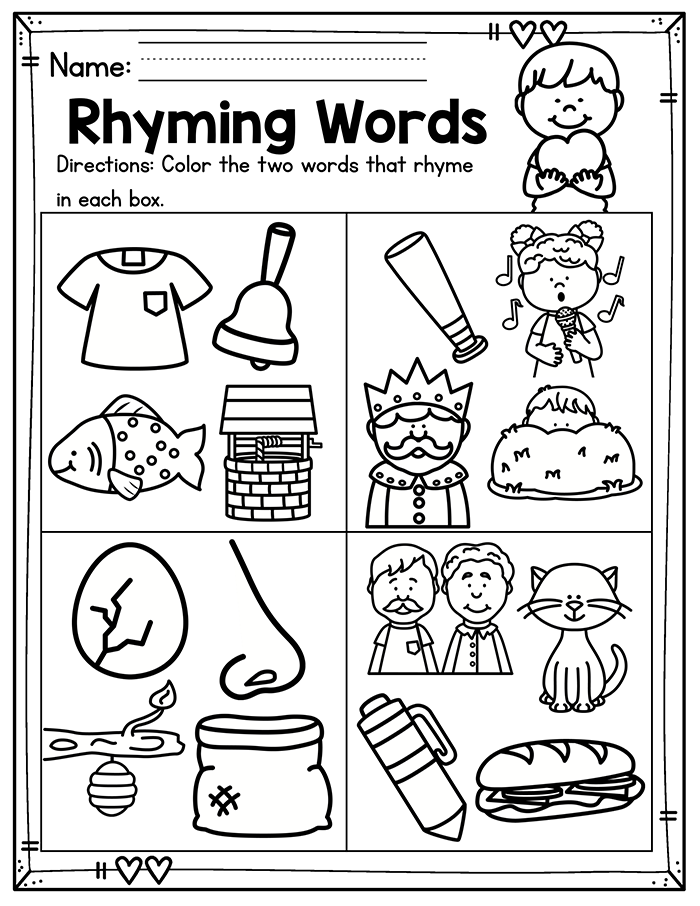
- Collective compilation of the text according to the algorithm.
- Creation of poetic texts by subgroups and small groups.
- Individual compilation of poetic texts by children.
Teaching preschoolers to create rhyming texts should start at the age of three. Researchers of children's speech found that children from 3 to 5 years old have a natural need for versification. A cheerful, funny, frightening or teasing poem is a child's verbal toy, and at the same time children's poetry.
Without the word play contained in rhyming texts, the child will not be able to master the richness of his native language. After all, a rhymed text helps to express not only thoughts, but also feelings, experiences of a person.
Problems of teaching rhyming.
Second junior group
Teach children to find words that rhyme with each other, for example: bird - titmouse, cat - mouth, etc. Encourage children to create two or three rhyming lines (semi-active stage) for objects depicted in the picture, described in fairy tales, or from the immediate environment.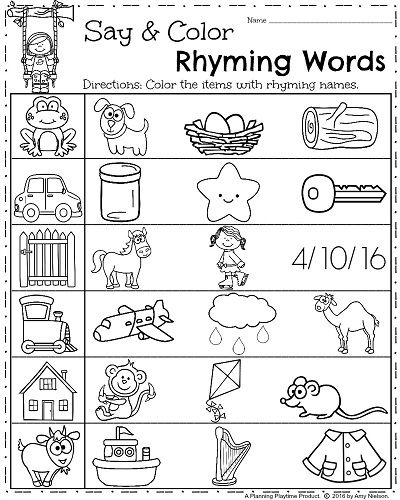
Middle group
Continue to teach children to find words that rhyme with each other and create two or three rhyming lines (active stage) according to the objects depicted in the picture, described in fairy tales, or from the immediate environment.
Encourage children to create four-line rhymes.
Senior group
Teach children to independently find nouns that rhyme with each other (laziness - stump), verbs (ran - lay), adjectives (beautiful - cute), adverbs (easy - deep). Learn to analyze the content of the poem and establish cause-and-effect relationships indicated in the text.
Preparatory group
To teach children to independently find words that rhyme with each other and create four rhyming lines based on objects depicted in the picture, described in fairy tales, or from the immediate environment. To form the ability to compose rhymes using a variety of models.
Second junior group
I started working on compiling rhyming texts in the 2nd junior group in the second half of the year.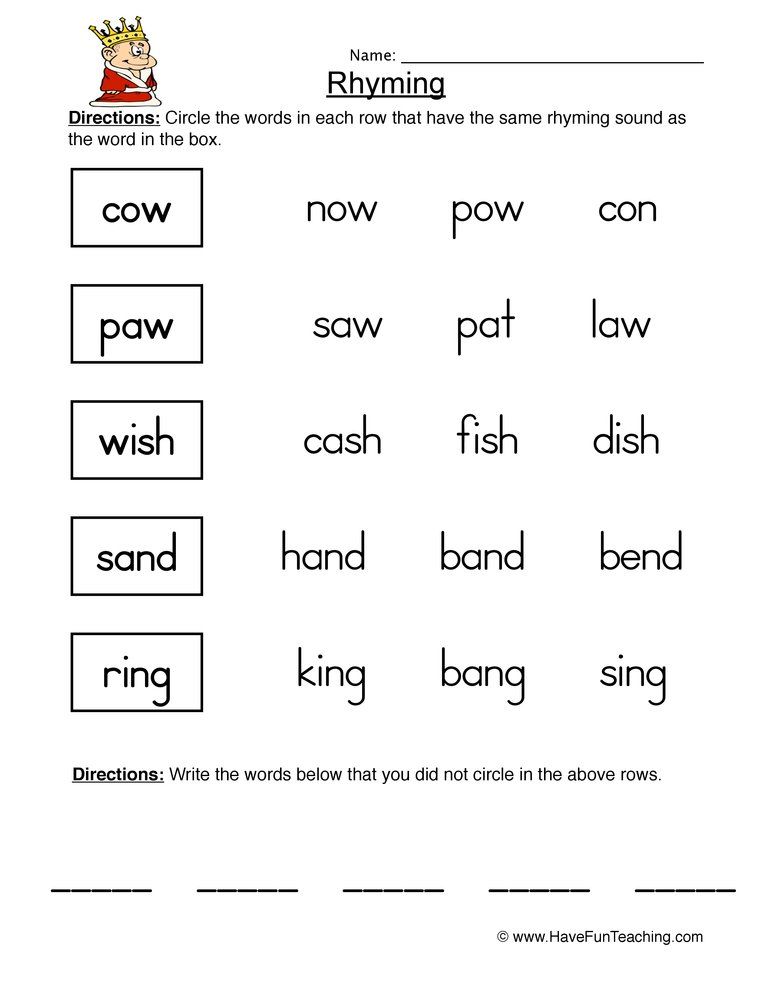 The first thing the children got acquainted with was a game called "Folding Pictures" bright, colorful, single pictures. They looked at them with pleasure. Then I suggested that each picture find a pair, (starting with 5 pairs of pictures, gradually increasing), but such that when you pronounce the picture, you get a song. We called this song rhyme. And in order to interest the child, I dressed up the doll and gave her a name - "Aunt Rhyme", who visited us throughout the year. I used games from the "Collection of methodological materials MDOU No. 242" Sadko "2004.
The first thing the children got acquainted with was a game called "Folding Pictures" bright, colorful, single pictures. They looked at them with pleasure. Then I suggested that each picture find a pair, (starting with 5 pairs of pictures, gradually increasing), but such that when you pronounce the picture, you get a song. We called this song rhyme. And in order to interest the child, I dressed up the doll and gave her a name - "Aunt Rhyme", who visited us throughout the year. I used games from the "Collection of methodological materials MDOU No. 242" Sadko "2004.
Folding pictures
Purpose: to teach children to match pictures of objects whose names rhyme.
Move: the teacher lays out about 40 pictures, the names of which rhyme. The teacher raises a picture and asks to find a pair of rhymes. The game is considered over when 20 pairs are stacked.
"Folding pictures" (Luli rings)
Purpose: to teach children how to work with Luli rings; choose rhyming words.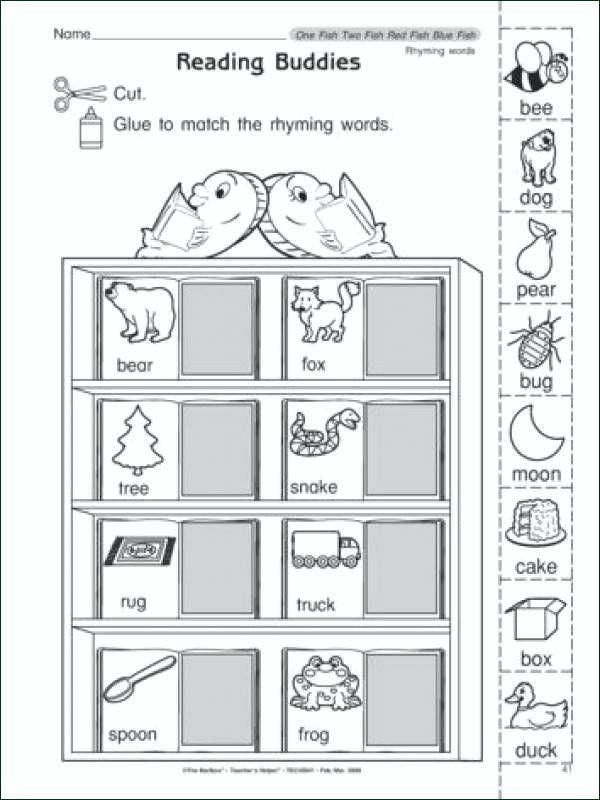
Move: On a small circle in the picture sector, and to them we will select rhyming words that are located on a large circle.
"Say a word"
Purpose: focusing on the endings of verbs and nouns, select words to rhyme.
Move: The teacher reads short passages, the children agree on the ending.
1. Bunny drums loudly.
He is a serious business ... (busy).
2. The shepherd wakes up first,
Before the shepherd gets up ... (rooster).
3. Hedgehog - the watchman of the tower -
Angry fox kneaded ... (sides).
4. Snowman - "carrot nose" -
Christmas tree to our house ... (brought it).
"Guessing riddles"
Purpose: to form the ability of children to listen, to finish words, picking up riddles in rhyme
Move: The teacher reads riddles, and the children guess.
1. In the summer in the swamp
You will find her,
Green frog.
Who is this? ….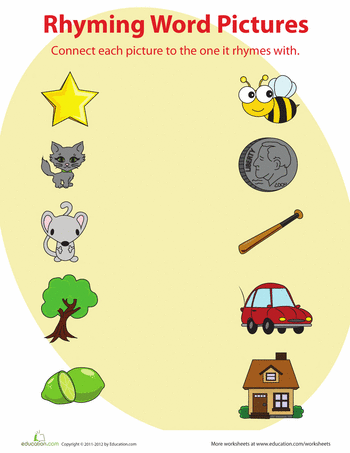 (frog)
(frog)
"Find a rhyme"
Purpose: To continue to learn how to create a rhyme and find similar-sounding words.
Move: We select with children words similar in sound to one word:
Bridge - tail - toast, etc.
Bird - pizza - titmouse, etc.
Pillow - frog - tub, etc.
Then the teacher reads the quatrains and asks the children to find the words in rhyme.
There is a cat with a mustache
Wandering around the garden,
And a horned goat
Follows the cat.
Etc.
"Riddles - Sayings"
Purpose: To develop a sense of rhyme, to develop a vocabulary.
Move: The teacher reads riddles, the children guess them.
1. I am a little bird -
My name is .... (titmouse).
2. In winter it is like fluff, then hard,
In summer it is called .... (water).
3. You warm the whole world
And you don’t know fatigue,
You smile at the window,
And everyone calls you .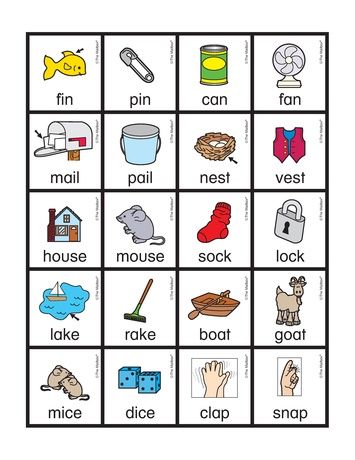 ... (sun).
... (sun).
4. We are happy to overtake each other,
Look, my friend, don't fall!
Good then, light
Fast…. (skates). Etc.
"Who becomes who?"
Purpose: to exercise children in the selection of words to rhyme.
Move: the teacher reads a poem by A. Shibaev (“For the smallest”, “Naughty children”, “Samovar”) and the children finish the words.
Once upon a time there was a little puppy,
He grew up, however,
And now he is not a puppy,
Adult .... (dog).
A mighty giant bull,
In childhood he was ... (a calf)
A foal every day
He grew up and became ... (horse)
Abstract of the lesson for children of the younger group
Visiting Aunt Rhymes.
Program content:
- to teach children to select pictures depicting objects whose names rhyme;
- to teach children to work with Lulia rings;
- to teach children to choose rhyming words.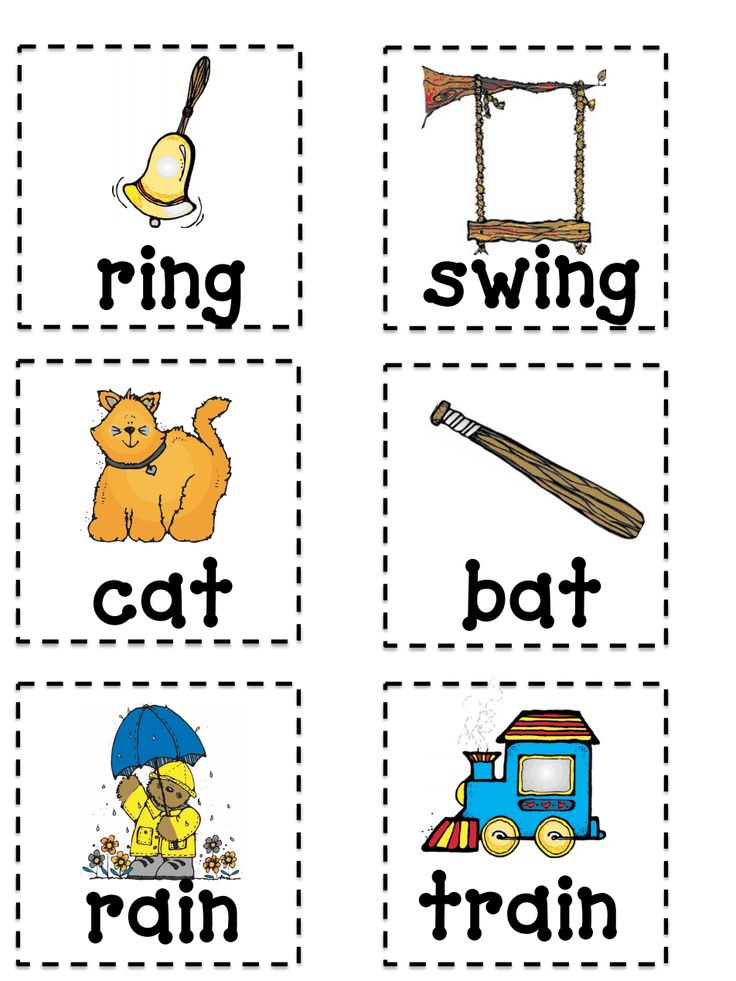
Organizational moment.
- The day has come.
-I will smile at you and you will smile at each other. It's good that we're all here together.
-How do we feel? (friendly, kind, calm, joyful, affectionate).
There is a knock on the door.
- Guys, Aunt Rhyma came to visit us.
- Tell me, please, what is a rhyme? (Children's answers)
- It's right when the words sound good.
- Auntie Rhyme offers to play a game called "Skladushki - patty".
Work at tables.
- Come here, we will play with magic rings.
- What are they called? (Rings of Lulia).
- On a small circle, in this sector of the picture, and to them we will select folding words that are located on a large circle.
- Look at the picture, who do we see? (Frog).
- And now let's pick a rhyme for the word frog.
Physical education minute.
- The next game is called Say a Word.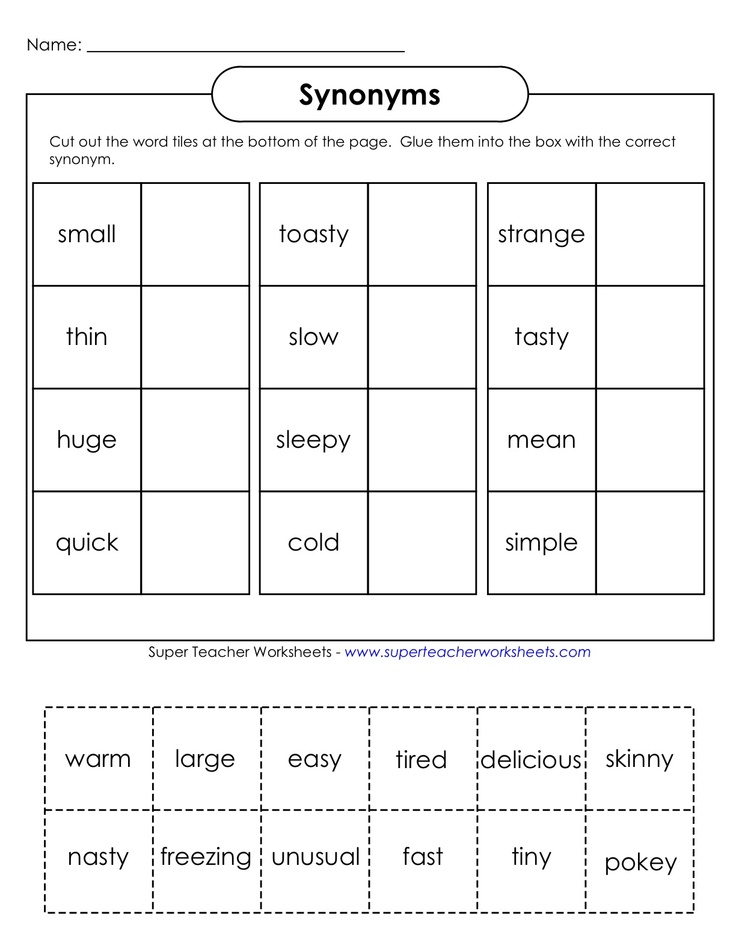
- I will read the sentence and you will finish it.
- Elephant with a trunk like a shower,
Washes the back, washes ... (ears).
- We baked from flour,
with onions, meat .... (pies).
- Without a key, you believe me,
you won’t open this .... (door).
- The shepherd wakes up first,
Before the shepherd gets up ... (rooster).
Result:
- Well done guys, Aunt Rhyme really enjoyed playing with you.
- Did you like it?
- Which game did you like best?
- How did we play? - Will we still play?
Middle group
The next stage of work is to create limericks. Limerick is a short poem, which consists of five lines and is written in the genre of nonsense (specified absurdity). First, limericks are created by a group of children, where the educator takes the leading role,
While compiling the limerick, the child can invent words in rhyme, but these words are not in Russian. In principle, I left this invented word, but with the condition that he explains its meaning, this is also the way the children's word creativity is formed. To begin with, the child must be introduced to the rule of working with the scheme:
In principle, I left this invented word, but with the condition that he explains its meaning, this is also the way the children's word creativity is formed. To begin with, the child must be introduced to the rule of working with the scheme:
| 1 line | GILL - was (Object) |
| Line 3 | What did you do? (Action or interaction with other objects) |
| 4 line | Who did you communicate with? |
| 5 line 9 | Conclusion |
- The first and second lines are rifm
- The third and fourth lines rhyme with each other;
- The fifth is a conclusion and may not rhyme.
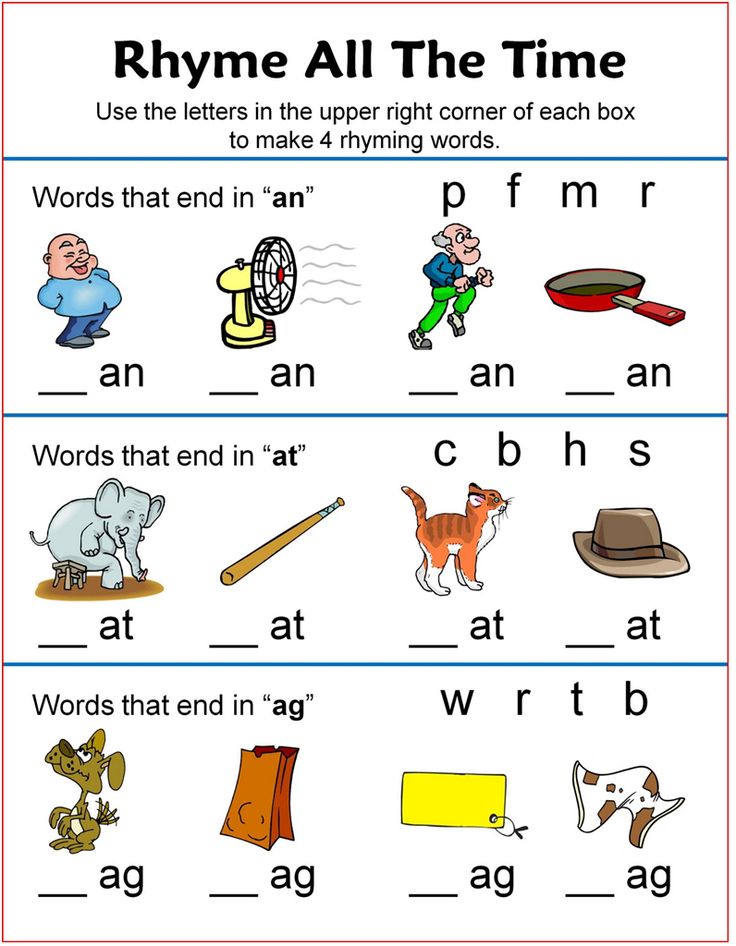
For example:
Once upon a time there was a cat, Once upon a time there was a river,
Her name was midge. She was hot as a stove.
She was small, She ran in the forest,
She slept on my palm. Warmed everyone up.
This is my cat. (Vova. *0002
Used games from the younger group and supplemented
"Circles on the water"
Purpose: To develop creative imagination, find rhymes.
Move: Guys, let's play with words, what they evoke in you, what associations, what combinations you can get.
For example: "lemon"
- He .... (sour, yellow…)
- It is related to the L-word (fox, moon, spoon, etc.)
- it rhymes with …
lemon – long loaf, lemon – balloon, lemon – law, lemon – bud.
Abstract of the middle group
Visiting Lesovichka.
Program content:
- to consolidate the ability of children to select a rhyme for a given word;
- to develop the ability of children to analyze the content of the poem;
- to consolidate the ability of children to select rhyming words;
- to consolidate the ability to select words that are opposite in meaning.
Activity:
- Let's hold hands, look at each other, smile.
- Guys, I suggest you play a game called "Teremok". The one who picks up a rhyme for a given word will sit in my teremok.
Game "Teremok".
There is a teremok in the field, it is neither low nor high. The one who picks up a rhyme for the word pillow - frog, summer - candy, dot - lobe, potato - midge, egg - ring, window - grain, flower - sock, jacket - duck, crow - crown, spoon - earring
- Guys, a magical old man - Lesovichek will come to visit us today. Do you want to get to know him?
(Lesovichok enters).
- Hello sad guys!
- Hello lazy guys!
- Hello dirty guys!
- Hello evil guys!
- Well, what kind of dunno are sitting here!
V.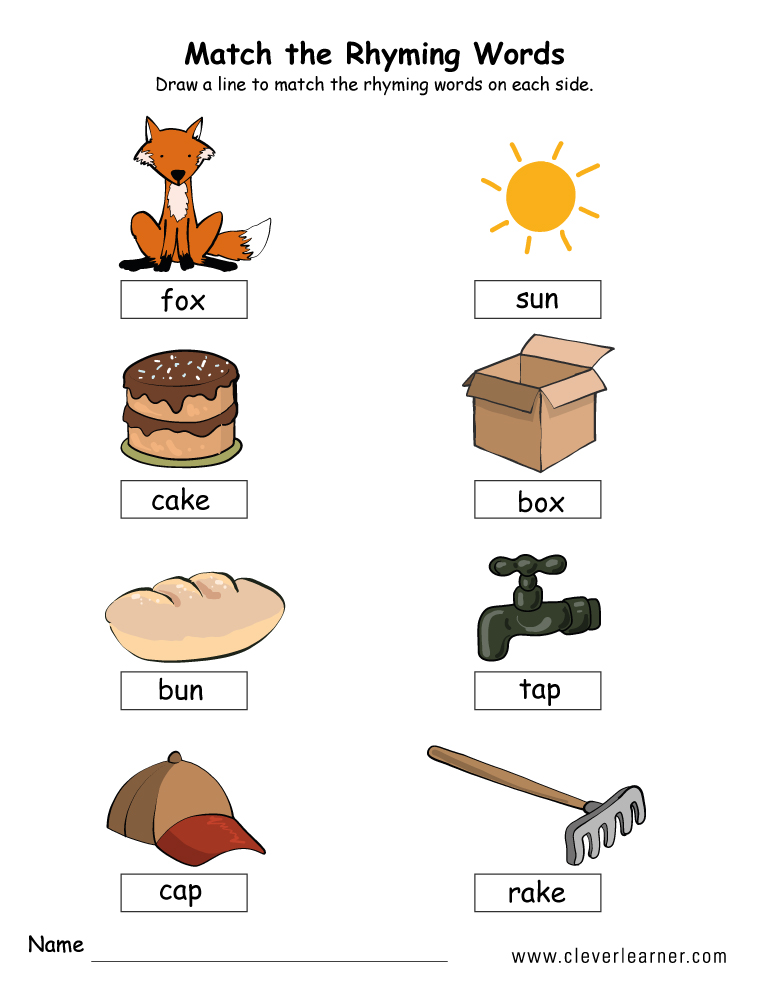 - It's not true Lesovichek, the guys learn everything from us and can even tell you something, somewhere.
- It's not true Lesovichek, the guys learn everything from us and can even tell you something, somewhere.
Guys, let Lesovichka read a poem about him.
An old old man lives in the forest, in a forest
He has a beautiful cap on him
He dances a hopachok,
Here is such a beautiful old Lesovichek.
Physical education minute.
Game "About whom, about what?"
- Guys, what object are we talking about?
- What sign is our object endowed with?
- What actions did you perform?
- How did the author describe him?
- The guys in this poem hid rhymes.
L. - Rhyme? And what is it? What is it eaten with?
- Guys, tell Lesovichka what rhyme is. For example.
- Let's now find sonorous words in the poem.
- Guys, why do we need rhyme? To write poetry.
- Guys, let's try to compose a poem.
Compose a poem.
- What do we select first (object).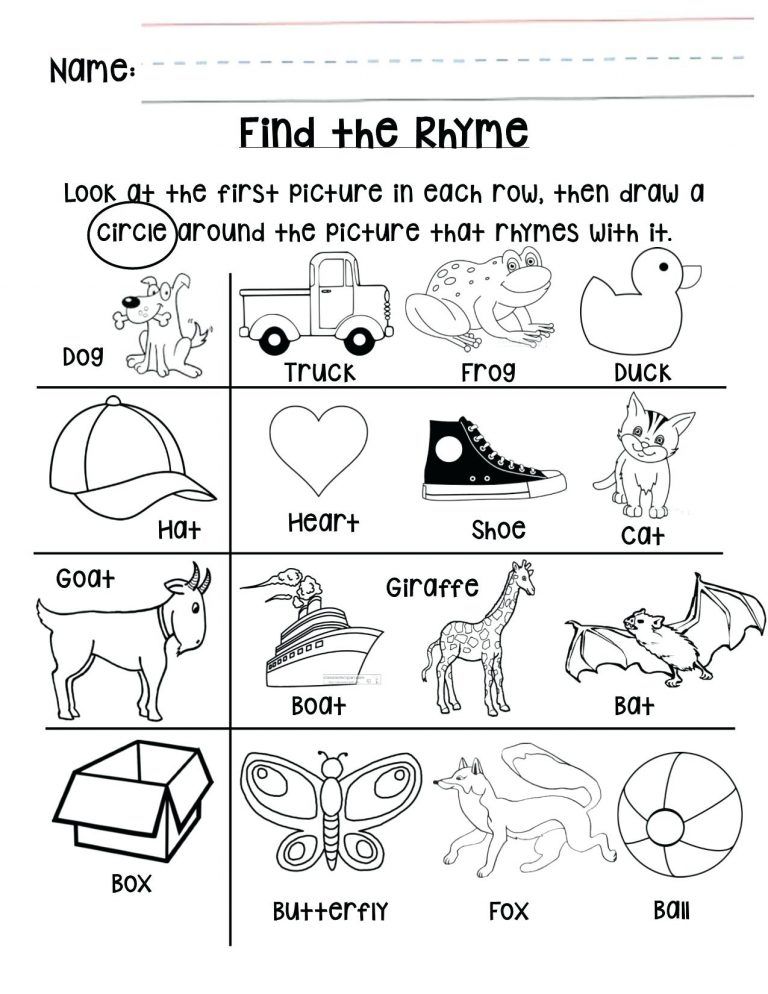
The first sentence - Once upon a time ...
- Then we need to characterize our object. What is his character.
-What actions does our object perform? What is he doing?
- What is the conclusion?
- Lesovichek, what do you have in your basket?
- I really love different pictures, so I brought them to show you
- Let's see, oh, rhymes are hidden here, let's pick them up.
L.- It's time for me to say goodbye, goodbye guys.
Total.
-It's good that Lesovichok came to visit us.
- Did you enjoy playing with him? And what did you like the most?
-Guys, are we still going to choose rhymes or is that enough?
-And compose poetry?
-I really enjoyed playing with you, goodbye.
Senior group
Rhymes improve mood, unite and organize children with their rhythm. They enliven classes, help many children overcome mental stress. Rhyming creates a feeling of self-confidence in the child, develops breathing, diction, hearing, tempo, and regulation of the strength of the voice.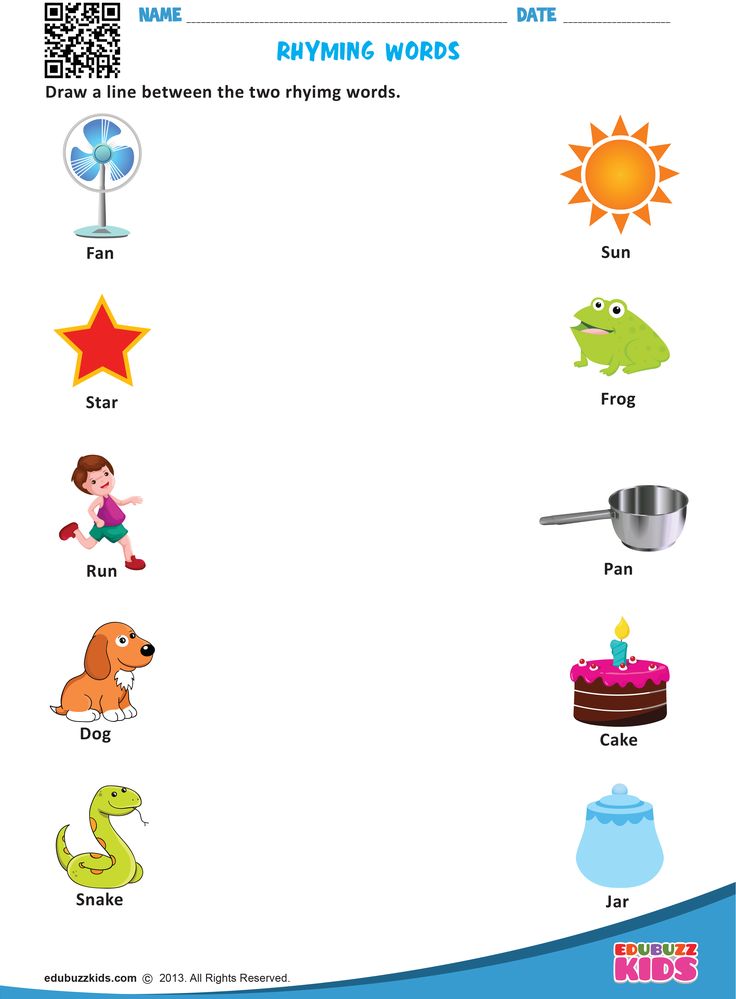 Expressive and emotional speech is formed.
Expressive and emotional speech is formed.
It also cheers up the child when parents take part in the creation of rhyming texts. The latter causes a feeling of joy and pride for them.
In order for the child not to lose interest in writing, we came up with the next stage of work.
Created a house of poetry, which allowed building poems according to the scheme. They came up with cards with the designation of a place, action, object. There can be several objects, actions, places in a poem, so the cards are numbered in order. If at the beginning of the poem the beginning begins from a place, then this is a card (No. 1). We do not put any cards on all other words, such as prepositions, conjunctions. We compose rhymed verses using the names of signs.
The rules for composing rhyming texts have changed with increasing complexity:
1. We compose a poem from five lines.
2. The first and second lines rhyme with each other.
3. The third and fourth lines rhyme with each other.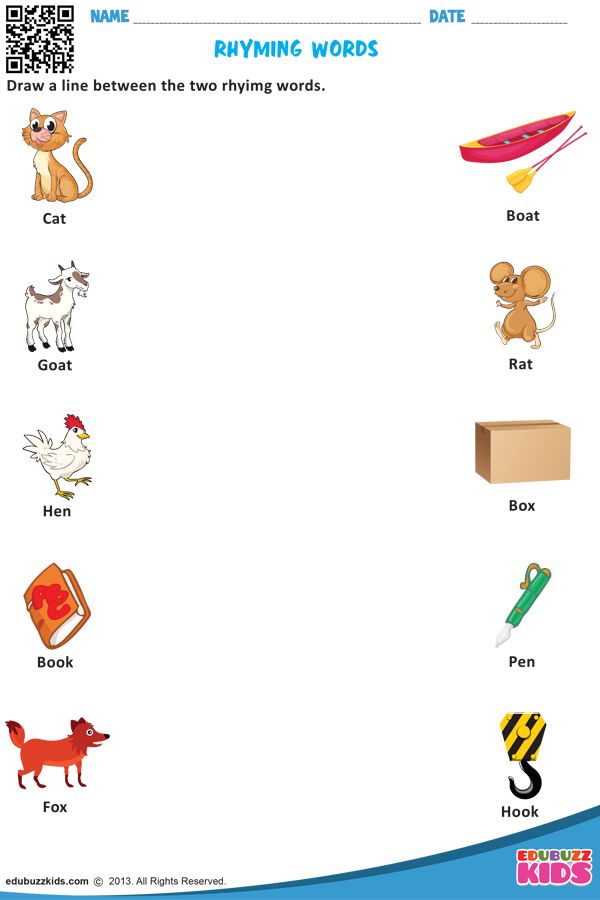
4. The fifth line is a conclusion and it does not rhyme.
5. We compose a poem using the names of signs.
6. The beginning of the poem begins the beginning, it can start from the object, and from the action, and from the place.
7. There can be several actions, objects, places in a poem.
8. —
(Figure 1. Poemage house)
For example:
lived a bird,
just like a bad house,
at the house of Letal,
grains, clutching
Here is such a bird. (Snezhana Lapteva)
In this poem, the beginning lived and was composed without names and features. We substitute the names of the signs after we have composed a poem and substitute them in front of the object, place and action.
Here is a funny poem with the use of feature names:
Wet bird.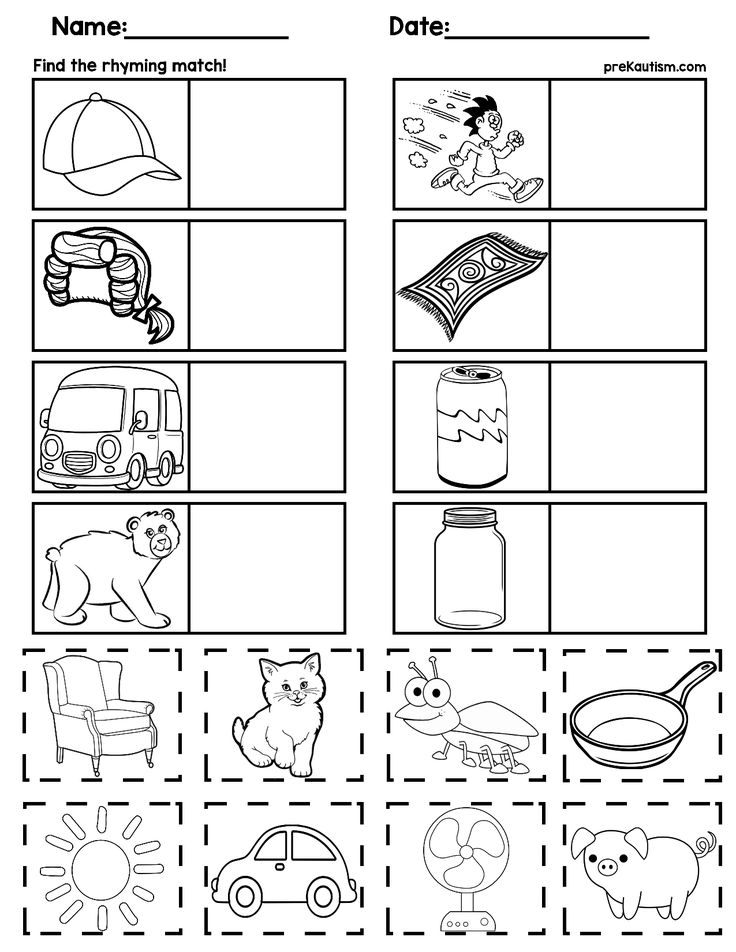
There was a wet bird,
Just like a little multi-colored bird,
It flew squarely around the house,
Grains pecked sourly,
You would be dry if you didn't fly in the rain. (Snezhana Lapteva)
During the choral pronunciation of rhymes, children can make movements, which causes delight in children.
(Figure 2. Table of signs)
"Warehouse - not a warehouse"
Purpose: to learn how to choose a rhyme for a given word.
Move: the host thinks of a word, the players come up with a rhyme.
For the next stage of work, it is necessary to teach the child to select rhymes for different parts of speech: verb, noun, adjective, adverb. You can make a didactic ball. This ball will be a hint for the teacher. Stick rhymes on the ball to different parts of speech - nouns cancer - poppy, flower - sock, duck - joke, etc. Verbs: ran - lay, played - called, pushed - blinked, etc. Adjectives: beautiful - massive, egg - wheat, etc.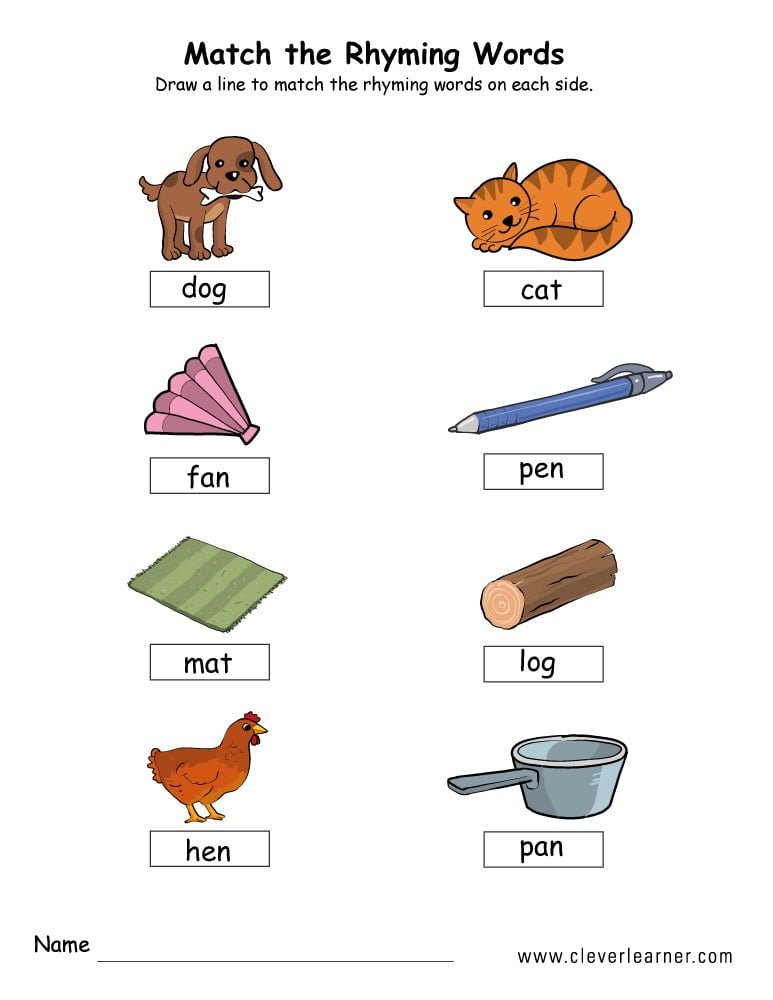 Adverbs: wide - far, deep - high. We named this game " Rhymed ball".
Adverbs: wide - far, deep - high. We named this game " Rhymed ball".
"Rhyming ball"
Purpose: to teach children to independently select rhymes for different parts of speech.
Move: the teacher calls a word of a certain part of speech, the children come up with a rhyme for it.
(Figure 3. Rhymane ball)
“Purelies”
Purpose: To teach children to select rhyme for sound combination
Move: the driver sets a certain sound combination, and the players compose a couplet with him sa - sa - sa - flew to us ... (wasp), scha - scha - scha - we found in the grass ... (tick), etc.
“Compose further”
Purpose: to teach children to match a rhyme to a given word.
Move: the teacher reads one line of the poetic text, and the children compose further.
Read poems, encourage children who have found a rhyme in a poem. These exercises encourage further writing.
These exercises encourage further writing.
About whom? About what?
Purpose: to teach to analyze the content of the poem and to establish cause and effect relationships indicated in the text.
Hod: What is the object in question?
What features does the object have?
What did he do?
What conclusion did the author draw?
The work of creating rhymes became the basis for the Smile project.
Purpose of the project:
1. Development of the social and emotional sphere of children of senior preschool age.
2. Raising children to actively display emotional responsiveness to others.
3. Mastering the culture of communication with adults and peers.
1. Practical part of the project
Ø Collection of information on the project (for what reason people smile).
Ø Project planning.
Ø Compilation of file cabinets (collection of funny pictures, funny toys).
Ø Creation of the Kingdom of Smile. “Ways to improve mood” Discuss with your child how you can improve your own mood, try to come up with as many of these ways as possible (smile at yourself in the mirror, try to laugh, remember something good, do a good deed to another, draw a picture for yourself).
Ø Composing funny poems with the help of a poem house and designing a book of poems.
In the future, we plan to continue to compose poems based on the objects depicted in the picture, described in fairy tales and draw them on our own.
| Programs
Material: | - To consolidate the ability of children to select rhyming words for a given word; - to consolidate children's ability to compose rhyming lines for a given phrase using the names of features; Poetic house, feature table, rhyming ball. |
| Introduction. | - Guys, what do I have in my hands? (Rhymed ball) - What are we doing with it? (We play rhyming words) - I ask a word, and you choose a rhyme for it. - Let's show our guests how we play. Children match rhymes to nouns, adjectives, verbs, adverbs.
|
| Rule for composing a poem. | - Guys, why do people need rhyme? (To compose poetry). - Can we write poetry? - And what helps us to compose poems? (Poet house). - What else? (Rule for composing a poem). - Who remembers the rule for composing a poem? 1. We compose a poem from five lines. 2. The first and second rhymes with each other. 3. The third and fourth rhyme with each other. 4. The fifth line is a conclusion and it does not rhyme. 5. We compose a poem using the names of signs. 6. The beginning of the poem begins the beginning, it can start from the object, and from the action, and from the place. 7. There can be several actions, objects, places in a poem. 8. — Composing a poem
|
| Reflection. | - What were we doing now? - What did we use to compose poetry? - Who did we write the poem about? - What do we conclude? - Why do we compose poems? |
Poems composed by children of the senior group "Pencils".
A prickly cat
Once upon a time there was a prickly cat
And she had a beautiful spoon
With this spoon she ate squarely,
And she sang sweet songs.
If you want to sing sweet songs, eat squarely.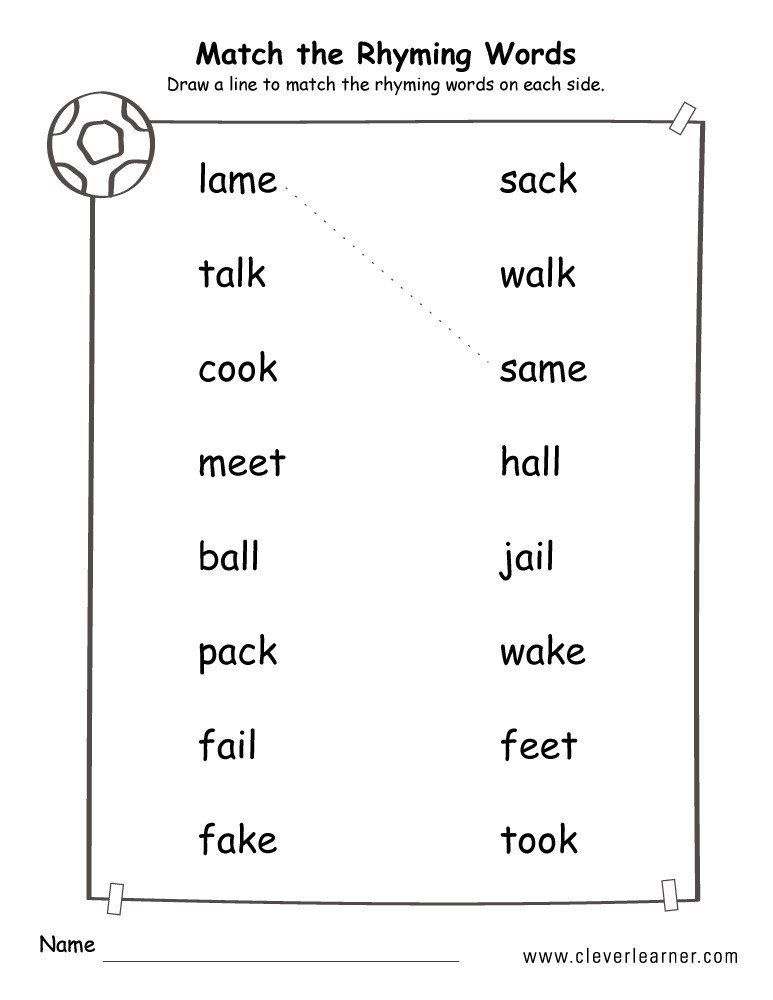 (Liza Yarashova).
(Liza Yarashova).
A hurried car
The vein was a rough car,
Its blue tires were punctured.
She was sad,
Because without wheels, neither here nor there. (Maxim Fomichev)
***
There was a bump,
It looked like a mouse.
She grew up on a Christmas tree
She had needles,
A cone looked at us from above,
Didn't overlook anything. (Maxim Fomichev)
***
I was presented with a ring,
It looked like an egg,
It decorated a hand,
sometimes caught up with boredom,
,because it was old. (Snezhana Lapteva).
***
There was a bird,
Just like a small one,
Flying around the house,
Grain pecking
Here is such a bird. (Snezhana Lapteva)
***
We have a girl in the group,
Her name is Umochka,
She has a beautiful bag,
She gives it to everyone to play,
9000 (Ella Akramova).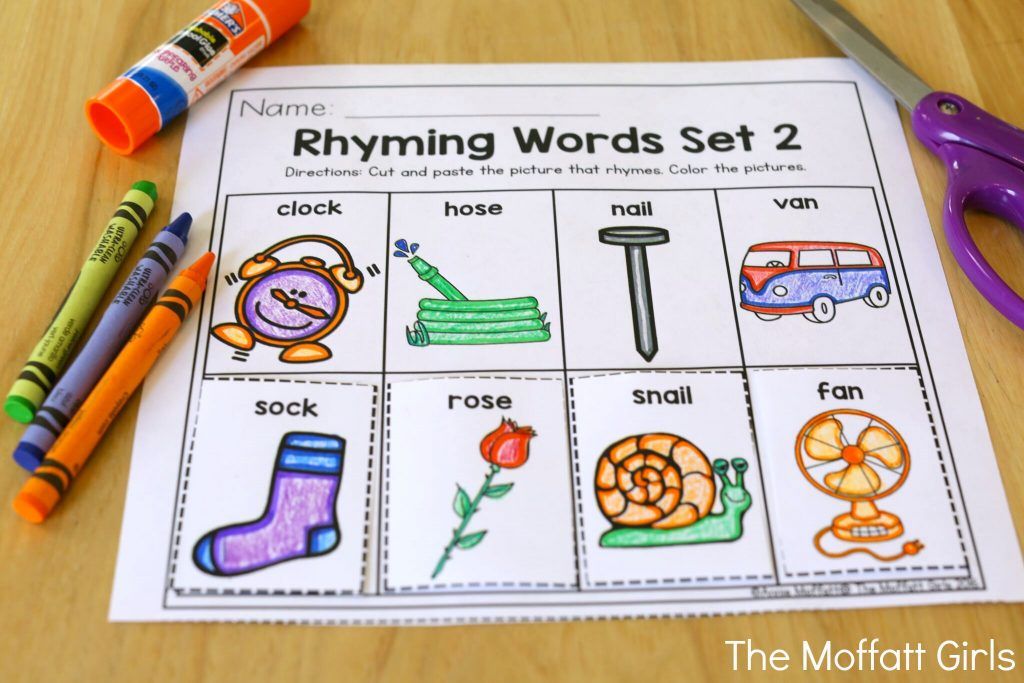
***
A mouse ran into a hole,
She held a crust in her teeth.
She will gnaw it
And she will be very lucky. (Maxim Fomichev).
***
The sun in the window,
All the time shone in the eyes.
Suddenly a wasp flew by!
Oh, it's the sun!
If it didn't shine in my eyes,
I wouldn't be bitten by a wasp. (Collective).
***
There was a river,
It was hot as a stove.
She ran in the forest,
Warmed everyone. This is such a caring river. (Lena Laryushkina).
There was a pencil,
It looked like a garage
He drew,
And painted all the garages.
This is such a fun pencil. (Polina Levitskaya).
***
There was a pump,
It was called a vacuum cleaner.
He vacuumed so cleanly,
That he swept everyone away. (Timur Siraev).